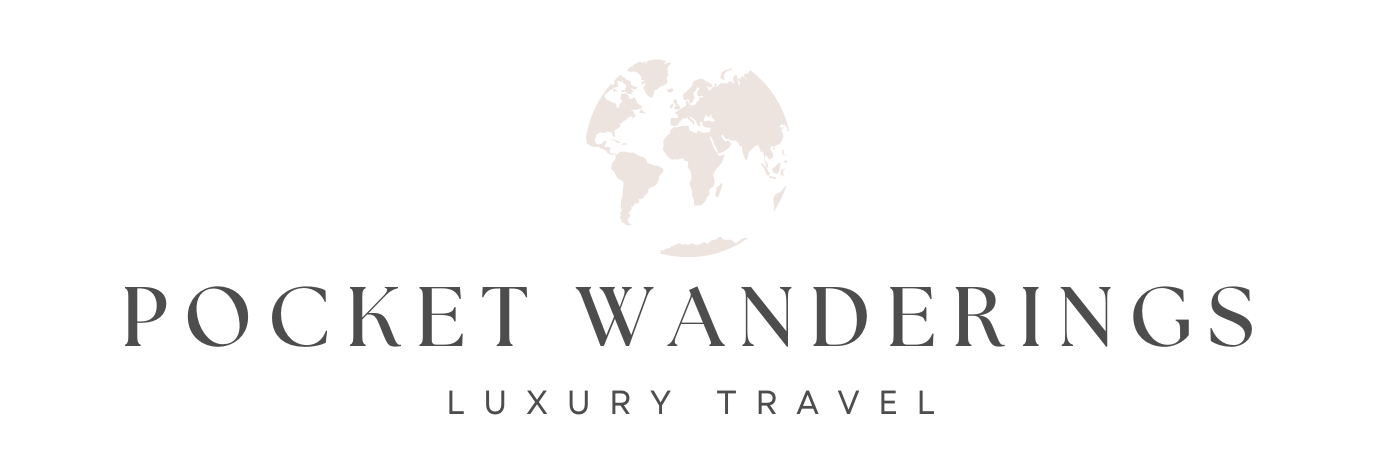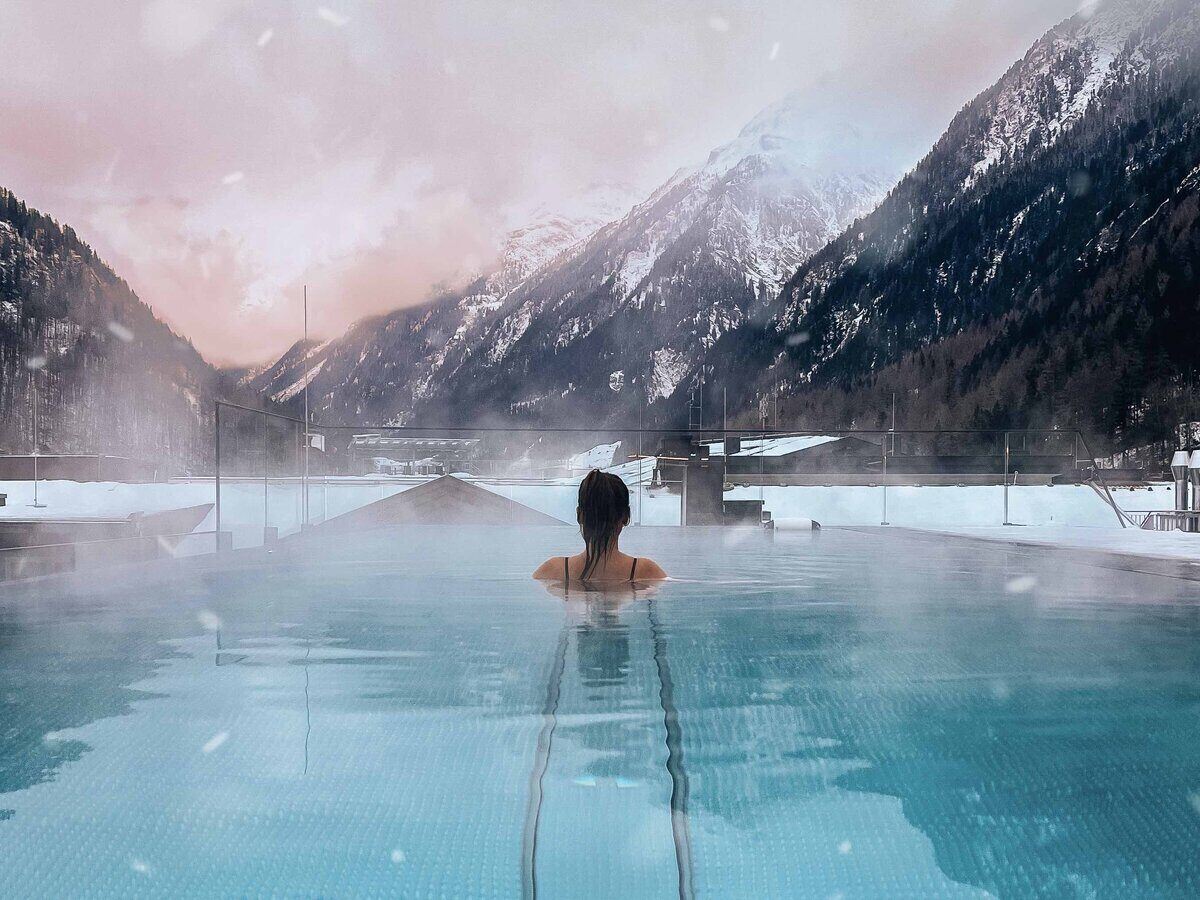
If you’ve followed along with my adventures for a while now, you’ll know that I pretty much live for the ski season! With expansive resorts, world-renowned dining, and accommodation for every type of adventurer, I consider skiing in Europe to be a near unbeatable experience.
Whether you’re a beginner or a seasoned pro, I know you’ll be able to find the best ski resort for your needs in Europe.
Home to the largest ski area in the world – the Three Valleys – but also to smaller emerging resorts, I love that the skiing in Europe is varied and diverse.
With so many exceptional ski resorts in Europe, I completely understand that choosing where to go can seem overwhelming. Most seasoned skiers or snowboarders, myself included, will have their personal favourites.
But if you’re looking to try somewhere new, or this is your first time skiing in Europe, then browse my personal selection of the best ski resorts in Europe.
I’ve had the pleasure of skiing in many different European ski resorts over the years, so I’ve used my experience to compile this guide.
Whether you’re in it for powder skiing or the après, for the beginner slopes or the snow parks, I’ve got something for you here.
Best time to go skiing in Europe
The Europe ski season generally runs from late November until mid-late April. The exact dates will of course depend on the ski resort and it can vary from year to year depending on snow conditions.
If you can, I’d recommend avoiding school holidays in both the UK and the destination country. Generally I find that the most affordable weeks are in mid-January, although the weather is usually a little colder.
March brings the perfect harmony of nicer weather and good snow conditions – and it’s my personal favourite month to go skiing.
April can be wonderful if you’re lucky with the snow conditions. Think bluebird days and t-shirt skiing!
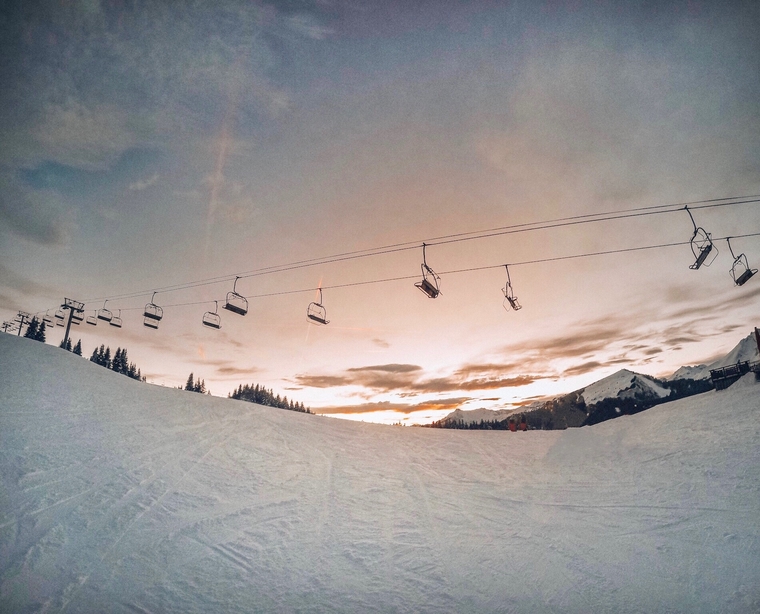
If you’re travelling near the start or end of the season, I’d suggest heading to one of the more snow-sure resorts. This usually means higher altitudes or a glacier.
The best snow-sure resorts include Val Thorens, Tignes/Val d’Isère and Les Deux Alpes in France; Obergurgl, Sölden, Ischgl and Lech in Austria; Zermatt and Saas-Fee in Switzerland; or Cervinia in Italy.
Discover more of the highest ski resorts in Austria for a snow-sure getaway.
How to get to the ski resorts in Europe
The most popular ways of getting to the European ski resorts are by air, by road or by train.
There are a number of airports which provide a gateway to the Alps and beyond, including Geneva, Chambery, Grenoble, Innsbruck, Milan, and many more.
Bear in mind that transfer times can be quite long. This is partly because of their location in the mountains, but also because heavy snow can cause significant disruption if you’re unlucky.
Driving tends to be a more popular option for those who have a place in the mountains (lucky things!) or intend to spend longer out there. I’d say that taking a car in the winter doesn’t really bring many benefits.
It is possible to get the train to a number of European ski resorts from some of the main airports or towns. Read our guide to the best ski resorts by train from the UK.
Best ski resorts in Europe
1. Val Thorens, France
Best for: Snowsure conditions & partying
Nearest airport: Chambery, Geneva
Transfer time: 1 hour 40 mins, 2 hours 30 mins
Resort height: 2300m
Ski area altitude: 1260-3230m
Beginners: Good
Intermediates: Excellent
Advanced: Good
Freestyle: Excellent
Après: Excellent
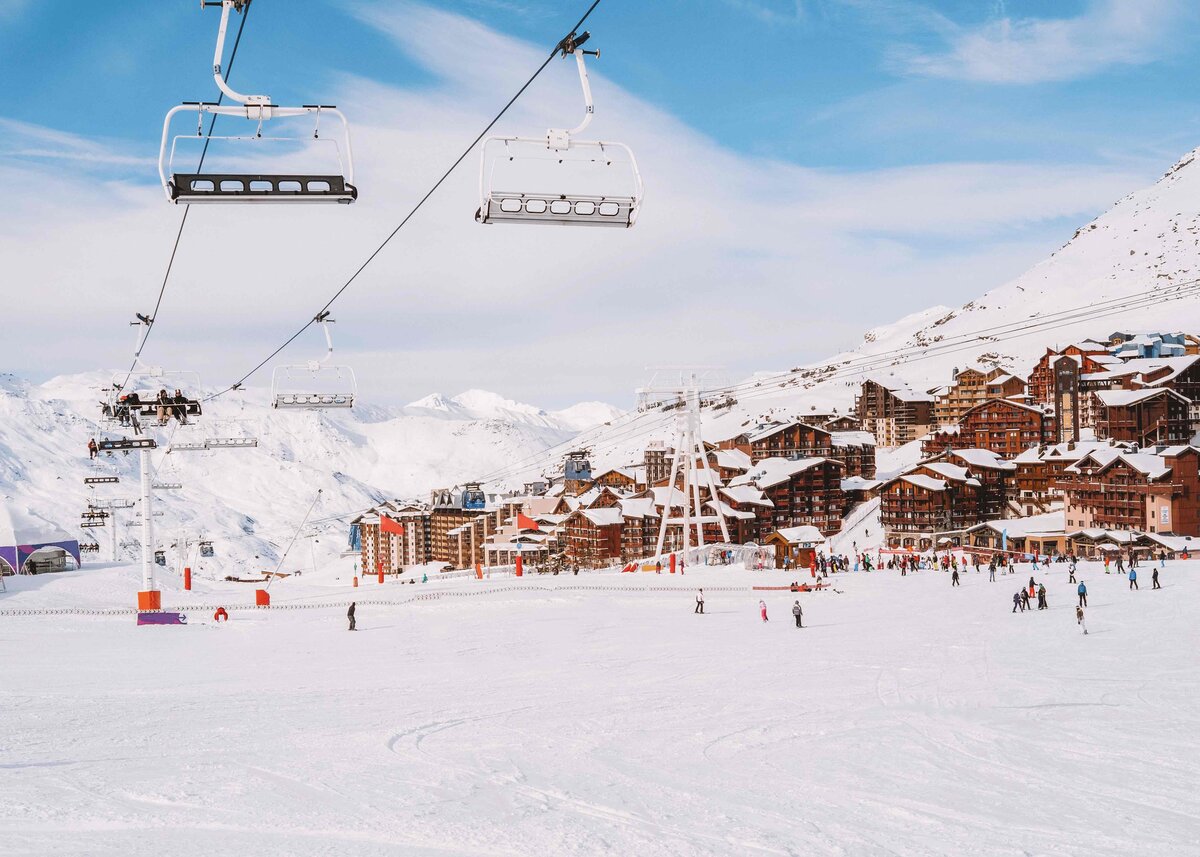
Having been voted ‘best ski resort in the world’ seven times, it’s no wonder that Val Thorens holds the top spot in my guide to the best ski resorts in Europe.
It’s a lively, cosmopolitan resort that combines exceptional skiing with unforgettable après. As the highest ski resort in Europe, Val Thorens offers snowsure conditions throughout the whole ski season.
Skiing in Val Thorens
Val Thorens is part of the expansive Three Valleys ski area – my personal favourite ski area in Europe. Skiers and snowboarders are treated to 600km of pistes, plus a compelling offering of off-piste opportunities.
From gentle blues and riveting reds through to challenging blacks and fluffy off-piste runs, Val Thorens has something for every level of skier.
Add in fast, modern lifts and it’s easy to see why the Three Valleys area draws so many keen skiers and snowboarders every season.
About the town
As a purpose-built resort, Val Thorens may not have buckets of charm. But what it lacks in charm it makes up for in convenience and provisions – from restaurants and bars to hotels and activities.
Any non-skiers in your group will have plenty to keep them entertained. Whether it’s an adrenaline-fuelled adventure like paragliding or fat biking, or simply relaxing and unwinding in a spa.
Discover my pick of the best ski resorts for non-skiers in Europe.
Après and nightlife
Val Thorens is famed for its raucous party scene, being a popular destination with the younger crowds.
If you plan to visit Val Thorens, I’d recommend checking that you’re not going to be there at the same time as the universities – unless that’s exactly the vibe you’re going for of course!
Val Thorens is generally considered to be one of the best ski resorts for après and nightlife in the world.
For those who aren’t as fussed about partying until the early hours, I’d suggest staying in the neighbouring resorts of Meribel or Courchevel instead.
Where to stay
The stunning Hotel Le Fitz Roy offers a memorable five-star experience right in the heart of Val Thorens. Complete with an enticing spa and exceptional restaurant, it’s a luxurious home from home.
For other luxury hotel options, I’d also consider Hotel Pashmina, Altapura or Hotel Koh-I Nor.
For a slightly more budget-friendly option that combines traditional decor with a friendly atmosphere, stay at family-run Le Sherpa.
Learn more in my ultimate Val Thorens ski resort guide.
2. St Anton, Austria
Best for: Expert skiers & lively après
Nearest airport: Innsbruck
Transfer time: 1 hour 30mins
Resort height: 1,304m
Ski area altitude: 1,304-2,811m
Beginners: Poor
Intermediates: Good
Advanced: Excellent
Freestyle: Excellent
Après: Excellent
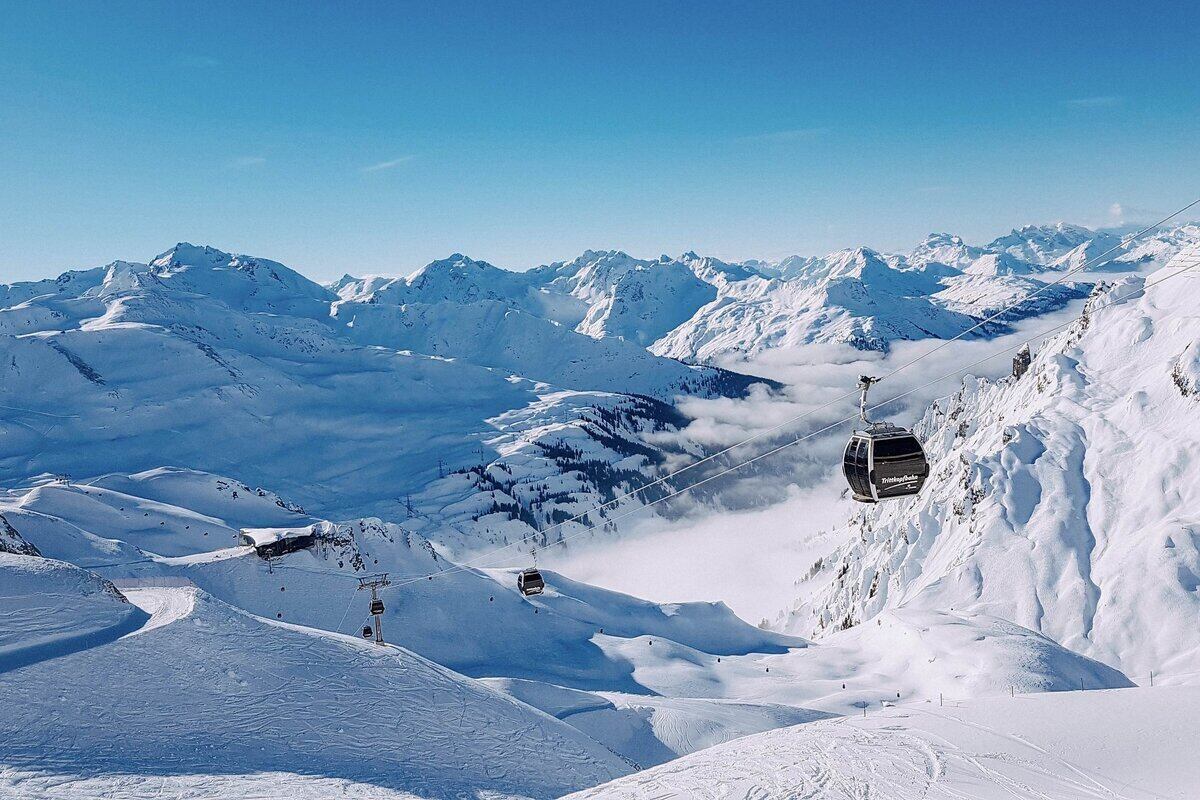
St Anton am Arlberg is famous for its challenging ski runs and world-renowned après.
I consider it to be one of the best ski resorts in Europe for expert skiers and boarders, due to its gullies, bowls and strong powder conditions.
Although pro skiers will love what St Anton has to offer, I would note that it’s not a great ski resort for beginners. So it’s best avoided by those just starting out.
About the town
St Anton is one of the more luxury ski resorts in Europe, so it’s not a particularly budget-friendly resort to visit.
As one of the oldest resorts in the Alps, the town brings buckets of traditional Tyrolean charm and an authentic feel, which I love.
It’s a big town so there are a wealth of hotels to choose from, as well as restaurants and bars.
There are also a number of activities for non-skiers – or for those who want a break from the slopes on a bad weather day (personally, I”m a fair weather skier only nowadays!).
These include indoor and outdoor climbing walls, tennis courts, and a bowling alley.
Skiing in St Anton
St Anton is part of the vast Ski Arlberg area, which is the largest connected ski area in Austria. Along with St Anton, it comprises the resorts of St Christophe, Stuben, Lech, Zürs, and Warth-Schröcken.
Explore 305km of marked pistes and 200km of tantalising off-piste trails. To really get a feel for the ski area, try the Run of Fame – a 65km route from St Anton to Warth-Schröcken.
The resort offers good snow conditions with plenty of powder, so I’d recommend this resort for powder hounds.
Snow quality of the lower runs can wane in the afternoon sun, but there are enough higher altitude alternatives. Modern state-of-the-art lifts ensure that queues are generally kept to minimum.
Après and nightlife
As well as its strong ski slope offering for pros, St Anton is renowned for its lively après ski. It’s one of the biggest draws to visitors of this Austrian ski resort.
There are plenty of après spots on the slopes, as well as various bars and pubs in the town itself. I’d recommend visiting two of St Anton’s world famous ski bars: Mooserwirt and Krazy Kanguruh.
Where to stay
One of the few ski-in ski-out hotels in St Anton is the four-star Mooser Hotel. It’s a laid-back hotel with friendly staff and an enticing spa area, as well as a great restaurant with panoramic views of the mountains.
Another popular option I’d recommend is Himmlhof – a boutique hotel with a traditional Tyrolean look.
For the ultimate luxury, I’d suggest staying at the exclusive five-star Raffl’s St Antoner Hof, complete with a stunning spa and award-winning restaurant.
3. Courchevel, France
Best for: Michelin-star dining
Nearest airport: Chambery, Geneva
Transfer time: 1 hour 10 mins, 2 hours 15 mins
Resort height: 1,300-1,850m
Ski area altitude: 1,300-3,230m
Beginners: Good
Intermediates: Excellent
Advanced: Good
Freestyle: Good
Après: Good
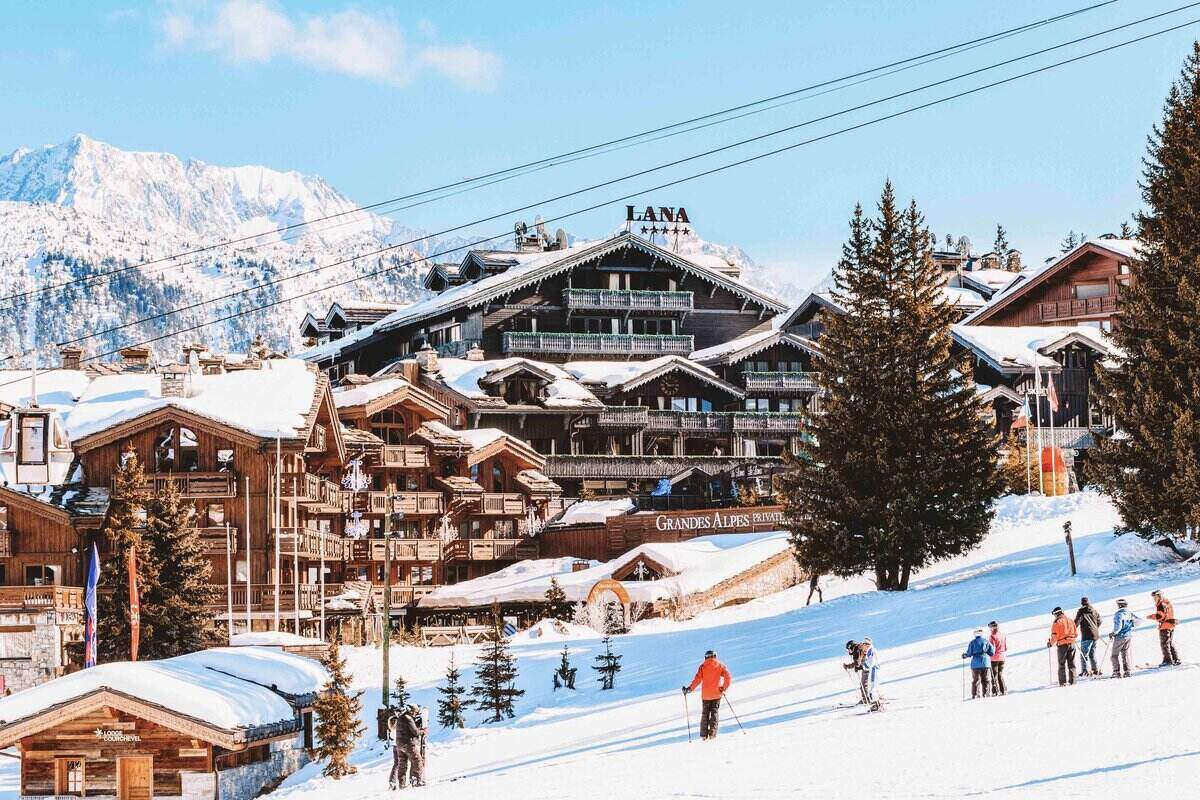
Courchevel is a glamorous ski resort that’s part of the largest ski area in the world: The Three Valleys.
The resort is spread over four villages: 1300 (known as Courchevel Le Praz), 1550, 1650 (known as Courchevel Moriond), and 1850. 1300 is an authentic alpine village; although full of charm, it’s not where many visitors choose to stay.
1550 is the more quiet and laid-back of the villages, while 1650 is more lively. 1850 is the most expensive and exclusive village.
About the town
Courchevel is the French ski resort of choice amongst the rich and famous. It’s a glamorous resort with spades of high-end shopping and world-renowned cuisine.
In fact, Courchevel is home to seven Michelin-star restaurants, with a staggering 12 stars between them.
There are some more affordable and laid-back eateries in the resort too, with around 70 places to eat. Although when I say ‘affordable’, I generally mean in comparison to the fine dining options!
Skiing in Courchevel
Courchevel shares a ski area with neighbouring Meribel and Val Thorens. It’s this access to such vast ski terrain that makes Courchevel such a popular resort.
With excellent snow conditions, lots of gorgeous tree-lined runs, as well as wide open pistes, I love that Courchevel offers something for every skier.
It’s an ideal resort for intermediate skiers, although there is plenty to keep both beginners and pros entertained.
I’d recommend that pro skiers head to the Grand Couloir. Considered to be one of the hardest runs in the Alps, it’s an ungroomed but avalanche-controlled run.
With an 85% gradient at its steepest and a hair-raising journey to get to the run, it’s not one for the faint-hearted.
There’s also an Olympic ski jump in Courchevel for those feeling particularly brave!
Families & non-skiers
For any families looking to ski in the Three Valleys, Courchevel is definitely the more family-friendly resort over party-central Val Thorens. It also has a great offering for non-skiers.
State-of-the-art swimming and wellness centre, Aquamotion, is well worth a visit. Or for something more adventurous, there’s ice climbing, snowmobiling and paragliding.
Where to stay
Visitors to Courchevel are spoiled for choice with luxury hotels. There’s the five-star family owned Hotel Annapurna, the glamorous L’Apogée Courchevel, and the contemporary Le Strato.
I know foodies will love Cheval Blanc with its two-Michelin-star restaurant. If, like me, you’re a fan of the luxury New Forest hotels Limewood and The Pig, you should check out their sister hotel Le Portetta.
For a self-catering option with all the luxury of a five-star hotel, stay at Six Senses Residences & Spa.
4. Zermatt, Switzerland
Best for: Spectacular scenery
Nearest airport: Geneva
Transfer time: 4 hours
Resort height: 1,620m
Ski area altitude: 1,620-3,883m
Beginners: Poor
Intermediates: Excellent
Advanced: Good
Freestyle: Excellent
Après: Good
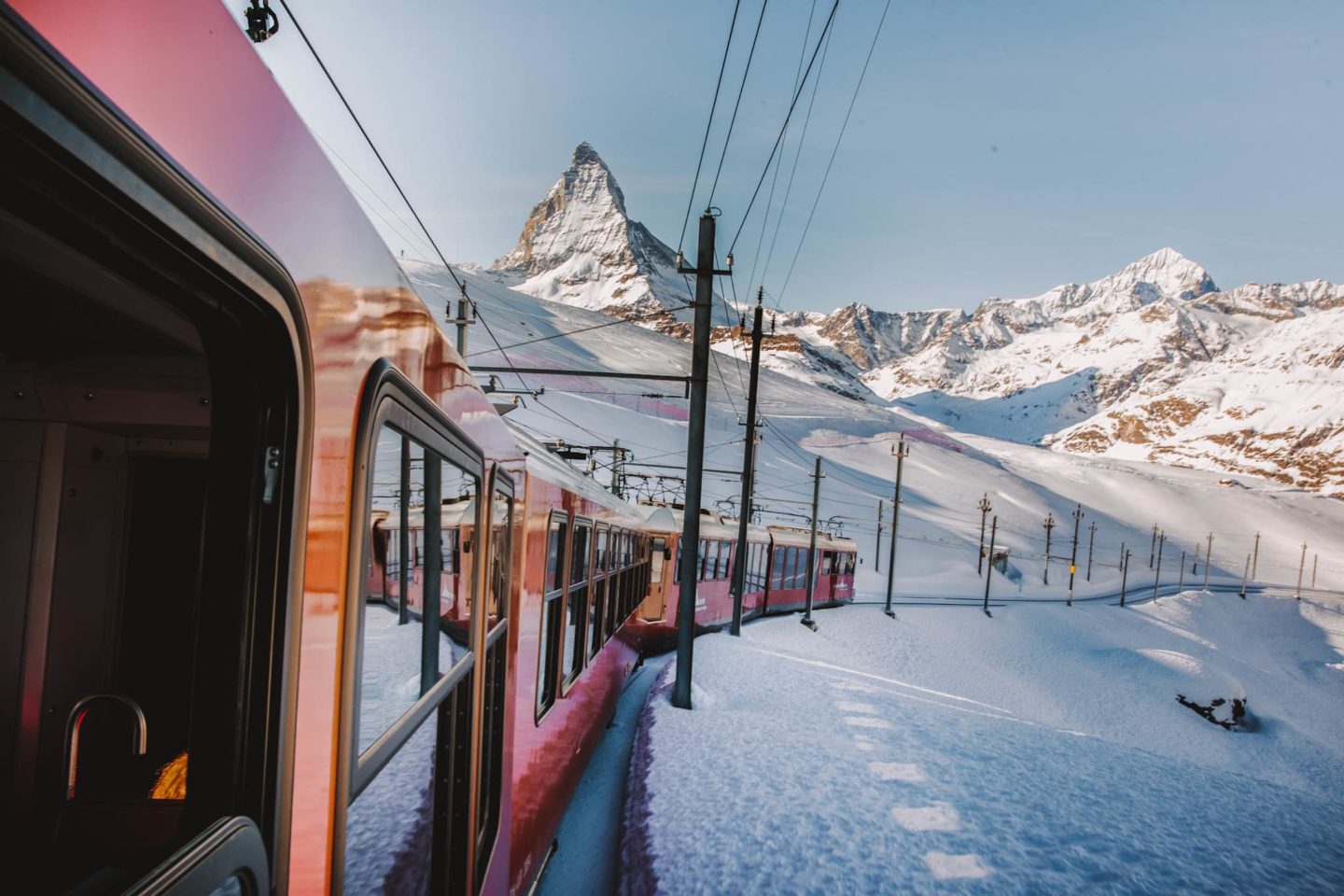
Zermatt is one of the most stunning ski resorts in Europe and my personal favourite ski resort in Switzerland.
It’s a fashionable ski resort with a strong history and heritage. As with many of the Swiss ski resorts, it’s not a particularly budget-friendly option.
For those who can afford it, believe me when I say that Zermatt ski resort is an unforgettable destination, being set against the iconic backdrop of the majestic Matterhorn.
About the town
I love that Zermatt is a car-free village with a buzzy atmosphere, making it a postcard-perfect ski town. Unlike many of the French and Austrian ski resorts, Zermatt is easily accessed by train.
Note that its distance from the nearest airport does mean a long transfer time if travelling by car.
There are plenty of accommodation options in Zermatt, with a number of excellent hotels and over 80 catered chalets.
Skiing in Zermatt
Skiers and boarders have access to three main ski areas: Matterhorn Glacier Paradise, Sunnegga-Gornergrat, and Cervinia.
That Zermatt shares a ski area with the popular Italian ski resort of Cervinia makes it a very popular resort.
It’s the perfect opportunity to pop over the border to Italy and indulge in some authentic pizza and gelato.
There is a very good lift infrastructure, although this is reflected in the lift pass price. The Zermatt ski area offers over 360km of pistes and high altitude skiing, with some of the highest slopes in the Alps.
In fact, I love that it’s possible to ski in Zermatt during the summer months, as the Matterhorn Glacier Paradise is open 365 days a year.
There are lots of compelling off-piste opportunities when the conditions are right.
For freestyle skiers and boarders, the Zermatt snowpark is a popular training ground with Olympic hopefuls, so I know you’ll be in good company!
Après and nightlife
Zermatt offers a range of après options both on and off the slopes. Whether you prefer a cosy spot to unwind, a laid-back sports bar or a fancy bar, Zermatt has something for everyone.
The Hennu Stall is the most popular bar in the resort, and is considered to be the Swiss answer to the Folie Douce.
Personally, I love Snowboat which offers a more premium après experience. While the Papperla Pub is a laid-back venue that I think is well worth visiting.
Where to stay
There are a wealth of outstanding hotels to choose from in Zermatt.
Some of the best luxury hotels include elegant The Omnia, friendly Mont Cervin Palace, boutique Hotel Monte Rosa, and traditional Grand Hotel Zermatterhof.
I’d also highly recommend the ski-in ski-out Riffelalp Resort 2222m – the highest luxury hotel in Europe. For those looking for exceptional spa and wellness facilities, I don’t think you can go wrong with the CERVO Mountain Resort.
Discover more of my favourite hotels and chalets in Zermatt.
5. Val D’Isère, France
Best for: Off-piste skiing and après
Nearest airports: Chambery, Grenoble, Geneva
Transfer time: 2 hours, 3 hours, 3hr 30mins
Resort height: 1,850m
Ski area altitude: 1,550-3,456m
Beginners: Reasonable
Intermediates: Excellent
Advanced: Excellent
Freestyle: Excellent
Après: Excellent
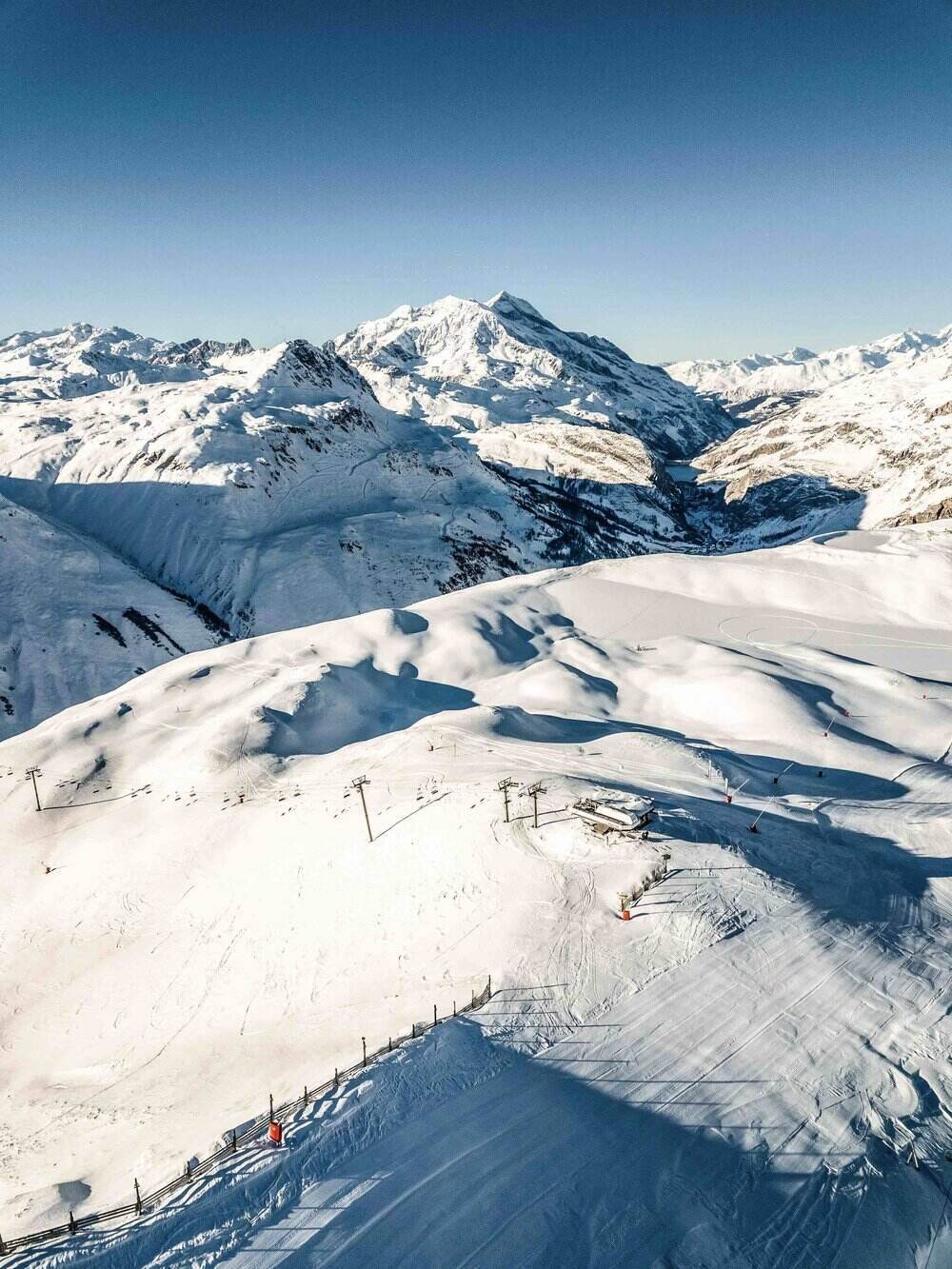
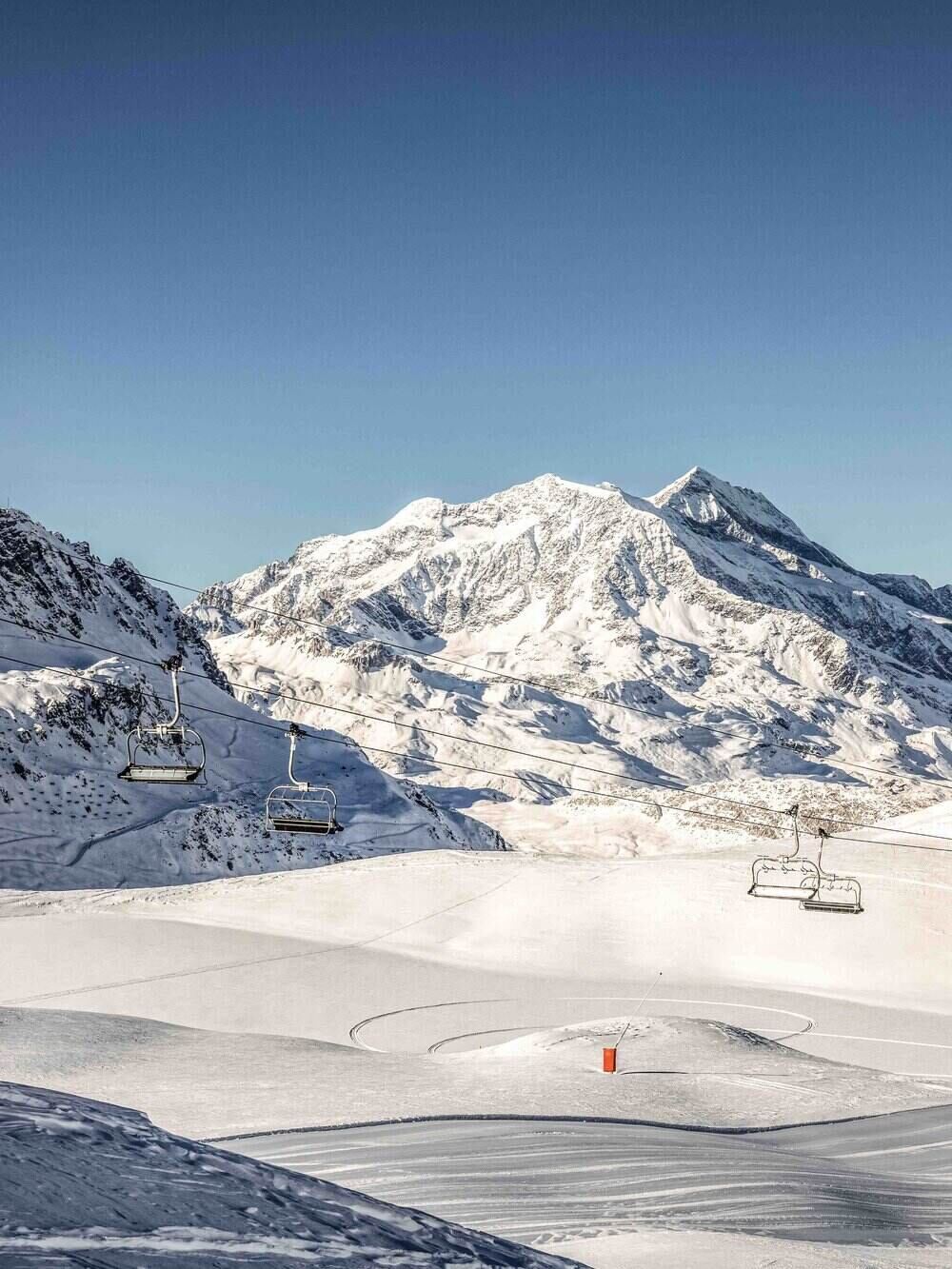
Val D’Isère is a high-end ski destination and one of the top luxury ski resorts in Europe.
Offering world-class skiing and world-renowned après, I can see why Val D’Isère has earned such a compelling reputation.
About the town
Val D’Isère is a charming Savoyard village with an Alpine atmosphere and friendly buzz. The hotels are luxurious, the bars are stylish, and the restaurants are fancy.
Val D’Isère is a great place for foodies, with an impressive selection of fantastic eateries. These include the exceptional Michelin-starred La Table de l’Ours, which I’d highly recommend.
Aside from skiing, other popular things to do in Val D’Isère include fatbiking, ice driving and ice climbing.
Skiing in Val D’Isère
Val D’Isère is part of the 300km Espace Killy ski area that’s shared with neighbouring Tignes. I consider it to be a fantastic resort for intermediates, with lots of long winding reds and cruisy blues.
There is plenty to keep experts entertained too, from steep couloirs and challenging moguls to outstanding off-piste opportunities. Skiers can also try the men’s Olympic downhill run, La Face.
I would say that Val D’Isère is not as suitable for beginners, although there are a handful of nursery slopes. Nearby Tignes has a slightly better offering for those just starting out.
Meanwhile, freestylers will love the famous Oakley ValPark. Val D’Isère also boasts a wonderfully long ski season, which runs from late November to early May.
Après and nightlife
The après scene in Val D’Isère is world famous. I’d suggest starting at La Folie Douce for dancing on tables in the sunshine, then head to popular Cocorico at the bottom of the slopes to continue the party atmosphere.
Finally, spend the rest of your waking hours dancing and partying at Dick’s Tea-Bar.
Where to stay
Val D’Isère is awash with high-end hotels and chalets. For a luxurious spa and wellness centre, I’d recommend staying at Le Yule Hotel & Spa.
Other five-star hotels to consider include Le Blizzard, Le K2 Chogori, Airelles, and Avenue Lodge. If a luxury chalet is more up your street, I’d suggest checking out Chalet Daria or Le Chardon Mountain Lodges.
6. Avoriaz, France
Best for: All rounder
Nearest airport: Geneva, Chambéry
Transfer time: 2 hours, 2 hours 30 mins
Resort height: 1,800m
Ski area altitude: 1,000-2,350m
Beginners: Excellent
Intermediates: Excellent
Advanced: Good
Freestyle: Excellent
Après: Excellent
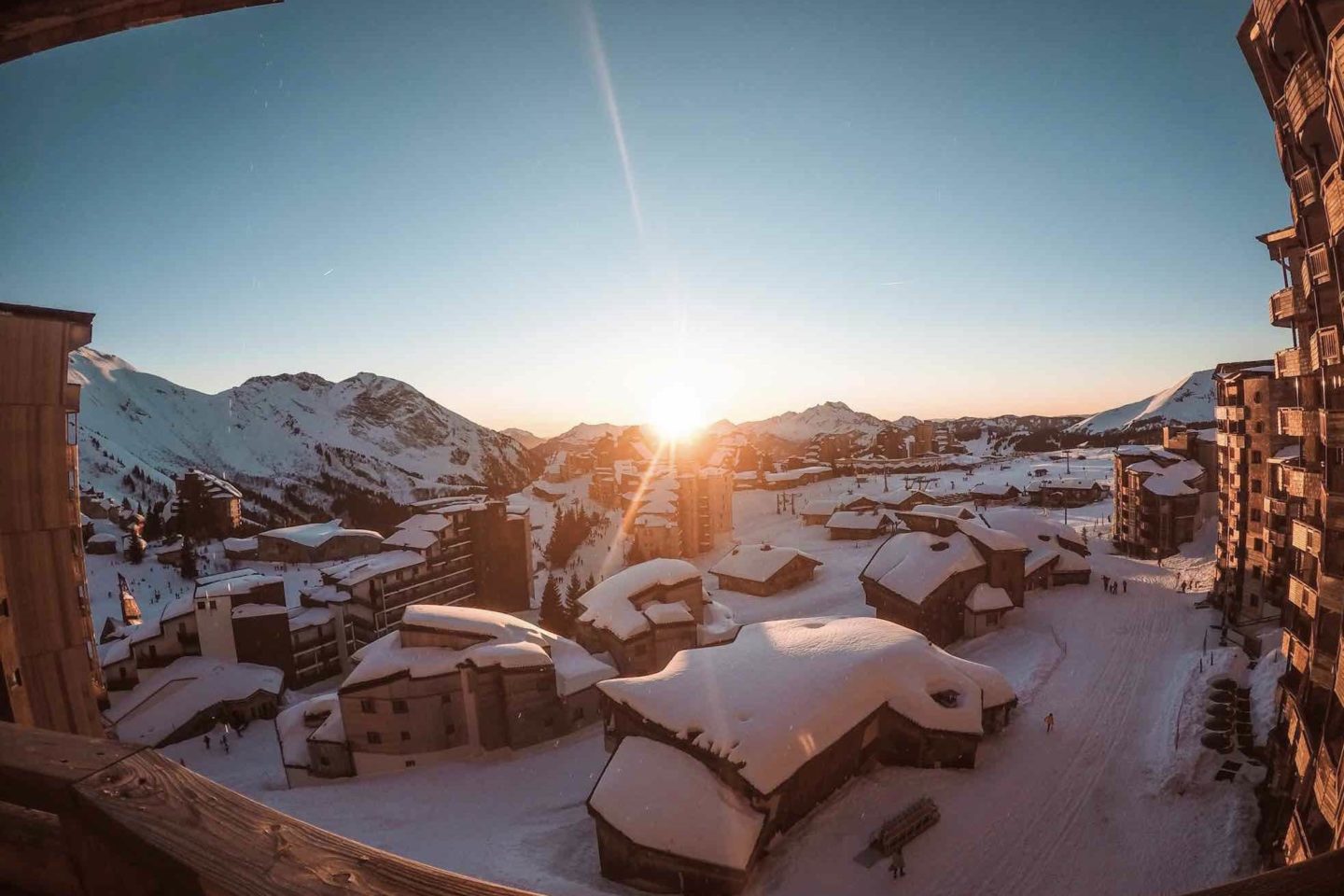
Avoriaz is a modern but charming purpose-built resort that sits on the side of a cliff, perched above the ancient town of Morzine. It is part of the vast Portes du Soleil ski area that covers two countries.
As a result, it’s linked to the French resorts of Morzine, Les Gets and Châtel, as well as the Swiss resorts of Chapery, Les Crosets, Champoussin and Morgins.
Avoriaz is generally considered to be one of the best ski resorts in Europe for families.
About the town
Avoriaz is a purpose-built resort that has a distinctive style, made up of tall wooden buildings with slanted roofs.
I love that the town itself is car free, meaning you can ski right through the town or catch a horse-drawn sleigh. It also means that most of the accommodation is ski-in ski-out, making it wonderfully convenient.
In terms of accommodation, there is a wealth of self-catering apartments, so I’d recommend Avoriaz for groups and families.
Skiing in Avoriaz
Avoriaz is part of the huge Portes du Soleil ski area, the second biggest ski area in France after the Three Valleys.
It’s the highest resort in the area, meaning it has reliable snowsure conditions throughout the season. There is a staggering 650km of pistes to explore.
Avoriaz is a great ski resort for beginners, as there are plenty of gentle nursery slopes. Much of the resort comprises blues and reds, so it’s great for intermediates too.
Part of the ski area sits on the border with Switzerland, so it’s easy to pop over for a day. Just make sure that you make it back over the border in time for the last lifts, or you’ll get stuck in the wrong country!
Experienced skiers will want to test their skills on the infamous ‘Swiss Wall’, a hair-raisingly steep run with moguls the size of small cars. Believe me, this will leave your legs burning!
There are plenty of opportunities for off-piste skiing too, with secure but unpisted snowcross zones.
Meanwhile, freestylers have plenty to keep them entertained with five terrain parks in Avoriaz alone, and 11 in the Portes du Soleil area.
Non-skiers
Avoriaz is a fantastic resort for non-skiers, with lots of activities to keep you entertained. There is the huge Aquariaz leisure centre with an indoor pool, as well as a bowling alley and skating rink.
For activities on the snow, try dog sledding, snowshoeing and snowmobiling.
Après and nightlife
I’m pleased to say that the après scene in Avoriaz has improved significantly over the previous few years. There are a wealth of bars and après venues to choose from both on the slopes and in the town.
Partygoers will be happy to know that there is a slopeside La Folie Douce for dancing on table tops and infamous parties.
I’d recommend checking out Chez Flo for live music, hearty food and a sunny terrace. While in town, Le Tavaillon is a typical British pub, and The Yeti has a great après atmosphere.
Head to Shooters Bar later on in the evening and then onto The Yak if you wish to party into the early hours.
Where to stay
There are no five star hotels in Avoriaz, but there are a number of gorgeous four star hotels and apartments.
Hôtel MiL8 is a new contemporary hotel offering stunning views and an inviting spa, while Hôtel des Dromonts brings a unique style with a luxury touch.
For high quality self-catering apartments, I’d recommend booking into the Résidence Pierre & Vacances Premium L’Amara.
For a gorgeous catered chalet option, one of my favourite places to stay is at Au Coin du Feu by Chilly Powder; although it’s technically in Morzine, it sits right at the bottom of the Prodains lift which takes you into Avoriaz.
7. St Moritz, Switzerland
Best for: Luxury
Nearest airport: Zurich
Transfer time: 3 hours 45 mins
Resort height: 1,770m
Ski area altitude: 1,720-3,022m
Beginners: Reasonable
Intermediates: Excellent
Advanced: Good
Freestyle: Good
Après: Good
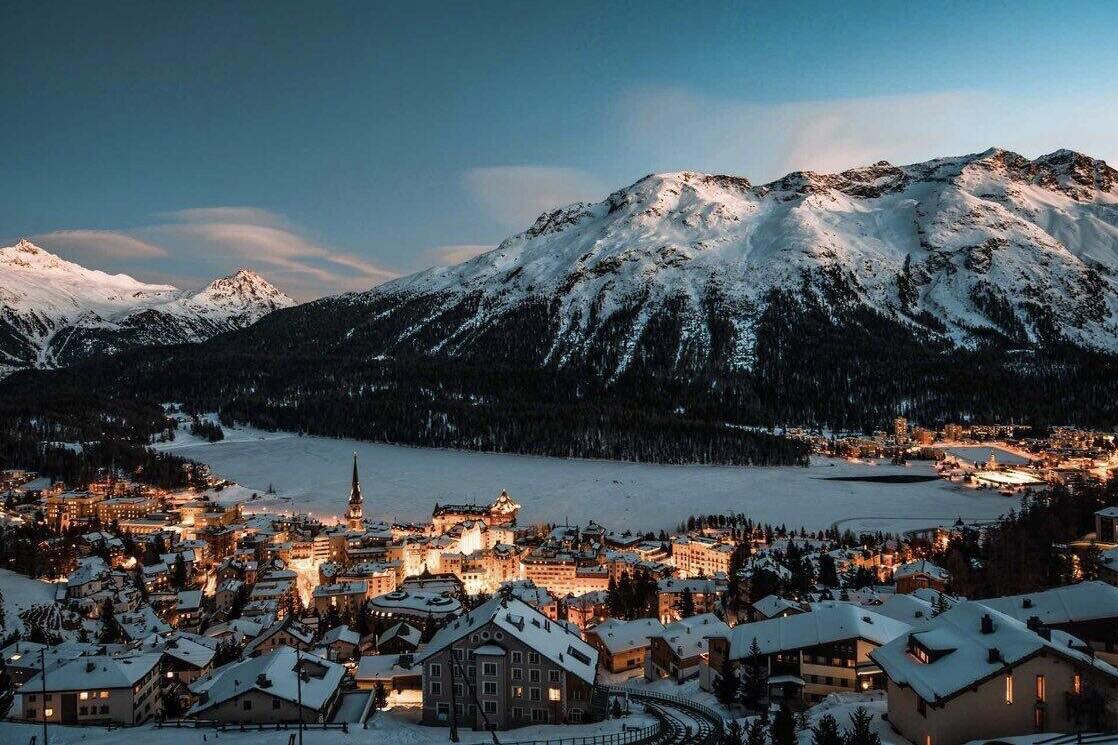
St Moritz is a world famous ski resort with a long history and heritage. Its closest mountain, Corviglia, was the birthplace of Alpine winter sports and kickstarted winter tourism over 150 years ago.
St Mortiz has hosted two Winter Olympic Games and five Alpine Ski World Championships, which is testament to its prestige in the ski and snowboard world.
About the town
St Moritz is synonymous with luxury. It is one of the most exclusive ski resorts in the world and, as I’m sure you can imagine, it has a price tag to match.
It plays host to countless celebrities and is well-known for its designer shops – perfect for discovering the best designer ski wear brands.
St Mortiz is not a modern resort, with architecture dating to the mid-1900s. As a result, it’s certainly not the prettiest resort but it does retain its undisputed heritage.
As you would expect from such a high-end resort, St Moritz has an exceptional fine dining scene. Home to six Michelin-star restaurants with 10 stars between them, discerning diners are spoiled for choice.
Skiing in St Moritz
The Corviglia ski area offers 155km of slopes spread over three ski areas, all against the backdrop of spectacular scenery and panoramic vistas.
There is a good range of skiing and snowsure conditions due to the resort’s altitude and excellent snowmaking systems.
St Moritz is best suited to intermediate skiers and boarders with its long blues and reds.
There is a good range of off-piste terrain for advanced skiers. I’m pleased to say that the inconvenient T-bars have recently been replaced with high speed chairlifts.
More unusually, St Moritz is now home to the world’s first yoga slope! “Yoga on the Snow” aims to give people the opportunity to unite with nature and your body.
What better place to do it than surrounded by the mountains of Engadin!
Non-skiers
St Moritz is actually a very popular resort with non-skiers. Activities include winter walking trails across frozen lakes, snowshoeing, tobogganing and horse-drawn sleigh rides.
There’s also the famous Cresta Run – an ice skeleton racing toboggan track that was built back in 1885. I would warn that this is not one for the faint-hearted!
Après and nightlife
St Moritz has a lively après scene, both on and off the slopes. Start at Pirates on the Rocks or Alpina Bar, which offers stunning views of the valley.
In the town itself, I’d recommend Roo Bar, Cresta Bar and Sunny Bar as popular après spots. Or a more civilised evening can be found at the Hotel Schweizerhof’s piano cocktail bar.
Where to stay
As you’d expect from such an exclusive resort, there is an abundance of five-star hotels in St Moritz.
The exclusive Suvretta House offers ski-in ski-out facilities, while the historic Kulm Hotel provides stunning lake views.
Badrutt’s Palace is where Alfred Hitchcock used to spend his winter holidays, and Giardino Mountain is home to a two-Michelin-star restaurant.
Or I’d suggest booking a stay at the stunning Carlton Hotel or the luxurious Kempinski Residences.
If you’d prefer to stay outside of the resort itself, I’d really recommend a stay at the luxurious Grand Hotel Kronenhof (sister to the Kulm Hotel) – read my review here.
8. Cortina d’Ampezzo, Italy
Best for: Italian charm and quiet pistes
Nearest airport: Venice, Innsbruck, Verona
Transfer time: 2 hours, 2 hours 30 mins, 3 hours
Resort height: 1,224m
Ski area altitude: 1,224-2,828m
Beginners: Good
Intermediates: Excellent
Advanced: Good
Freestyle: Reasonable
Après: Good
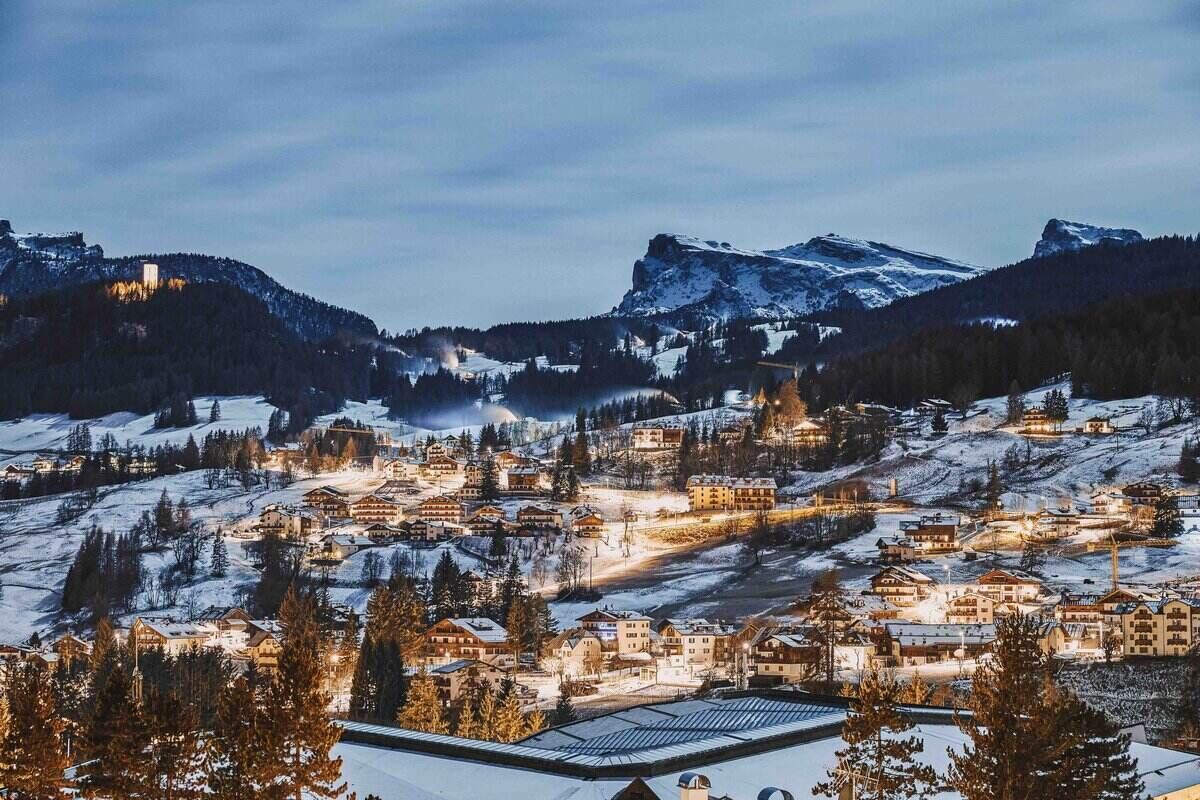
Affectionately known as the ‘Queen of the Dolomites’, Cortina is one of the most popular Italian ski resorts.
It is famed for its truly jaw-dropping scenery, sunny weather, and stunning vistas of the Dolomites.
In 2026, Cortina will be hosting the Winter Olympic Games. So it’s about to become one of the most famous ski resorts in the world.
Now I think there’s an excuse to enjoy the quiet slopes now, while you can!
About the town
The town of Cortina d’Ampezzo is a fashionable resort with a great buzz. As one of the most luxurious ski resorts in Italy, it’s expensive but certainly not on the same level as the likes of St Moritz or Courchevel.
There are plenty of fantastic restaurants and bars to choose from, as well as a selection of designer shops for the well-heeled visitors.
A lot of visitors to Cortina don’t actually go for the skiing – they simply come for the social scene, retail therapy, and unforgettable scenery.
Skiing in Cortina
I’d recommend Cortina as a great resort option for mixed ability groups. It offers a range of slopes, from gentle blues to long reds and challenging blacks.
The tree-lined pistes are beautiful to ski against the backdrop of the spectacular Dolomite mountains.
Slopes are generally very empty, which is a big advantage of skiing in Cortina. There is a great beginner ski area that is nice and sunny.
Plus, I think the lack of crowds also makes Cortina a great place for first timers to hone their skills.
More experienced skiers can try the famous downhill run from the 1956 Winter Olympics. Or consider the historic WW1 ski circuit.
Note that some of the lifts are a little outdated, but I suspect that’s likely to change with potential investment ahead of the 2026 Winter Olympics.
Après and nightlife
Italian après tends to be a more laid-back affair. Think sipping cocktails while relaxing on a sun terrace, plus some wonderfully chic bars in the town.
There are a few clubs in town for those who like to party a little harder.
One of my favourite slope-side spots is Chalet Tofane, a wine bar with a sunny terrace. Or Bar Sport is a cosy bar in town with an authentic atmosphere.
Where to stay
The five-star Cristallo Hotel is a glamorous establishment that has previously hosted royalty and Hollywood elite.
Consider a stay at the elegant Hotel Savoia for a big wellness centre and gorgeous mountain views. Other five star options include the Rosapetra SPA Resort and the Faloria Mountain Spa Resort.
For a more laid-back four-star hotel, I’d recommend booking a stay at the Càmina Suite and Spa hotel.
9. Chamonix, France
Best for: Off-piste skiing
Nearest airport: Geneva, Chambéry
Transfer time: 1 hour, 1 hour 30 mins
Resort height: 1,035m
Ski area altitude: 1,040-3,842m
Beginners: Poor
Intermediates: Good
Advanced: Excellent
Freestyle: Excellent
Après: Excellent
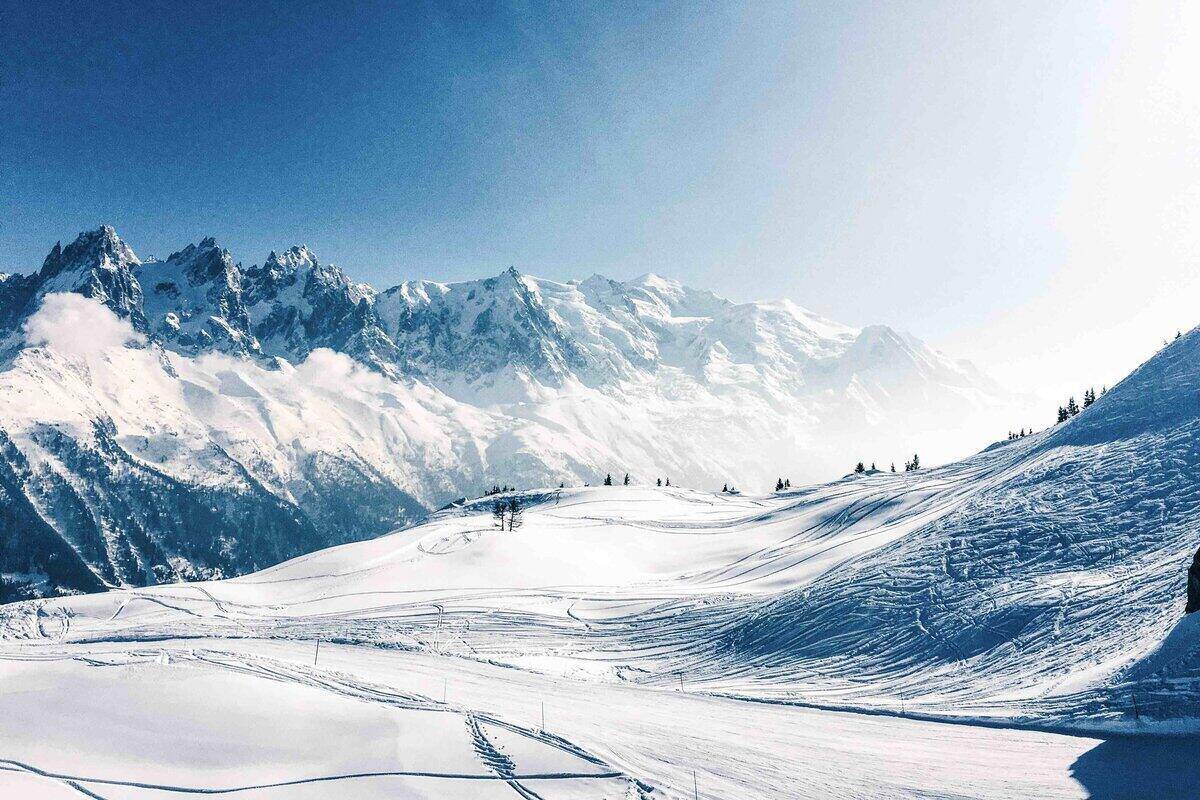
Chamonix is one of the oldest ski resorts in France – and undoubtedly one of the best ski resorts in Europe. Having hosted the first Winter Olympics in 1924, it’s a town of prestige and heritage.
The ski resort is a magnet for freeriders and experienced skiers due to its challenging terrain and remarkable off-piste opportunities.
About the town
Chamonix is a cosmopolitan but charming town located at the foot of Mont Blanc. In terms of style, Art Deco and Art Nouveau architecture meets traditional Savoyard buildings.
As a large town, there is an abundance of bars, restaurants and shops to enjoy.
Skiing in Chamonix
Chamonix is home to a 155km ski area. Although it may be smaller than other French ski resorts, believe me when I say that it makes up for it in remarkable off-piste opportunities.
As a result, Chamonix is generally considered to be one of the best freeride resorts in the world.
I know that experienced skiers will enjoy discovering a number of high altitude reds and blacks which provide plenty of challenges.
Where Chamonix really excels is with its thrilling off-piste terrain. I’d recommend trying the famous 22km Vallée Blanche off-piste trail.
Intermediates can explore the long blues in the resort, while beginners can hone their skills on the nursery areas.
I would say though that Chamonix is not particularly well suited to first time skiers or boarders. Meanwhile, freestylers will never be bored in Chamonix.
The resort is one big playground, with endless natural freestyle terrain as well as two snowparks, half-pipe and an airbag.
Non-skiers
Chamonix is also an excellent resort for non-skiers. Relax and unwind in a spa or go adventuring in ice caves or in the air by paraglider.
Be sure to visit ‘Step into the Void’, a glass box suspended on the side of the mountain at 3,842m high. It’s thought to be the highest tourist attraction in the world!
Après and nightlife
Chamonix offers a vibrant après scene with a plethora of bars and restaurants in the town. For live music, I’d recommend heading to Chambre Neuf between 5pm and 7pm during the week.
For a classic British sports pub where dancing on the bar is welcomed, go to Le Pub on the main street.
Or if you prefer to blend in with the seasonnaires, head to Monkey Bar and make the most of the happy hours.
Where to stay
For a chic Chamonix hotel, book a stay at the luxury Hôtel Mont-Blanc. Other five-star options include the high-end Le Hameau Albert 1er and the prestigious Grand Hôtel des Alpes.
For a more relaxed vibe, I’d suggest family-run Auberge du Manoir or residential hotel Les Balcons du Savoy.
10. Verbier, Switzerland
Best for: Swiss après & a vast ski area
Nearest airport: Geneva
Transfer time: 2 hours
Resort height: 1,500m
Ski area altitude: 821-3,330m
Beginners: Reasonable
Intermediates: Good
Advanced: Excellent
Freestyle: Excellent
Après: Excellent
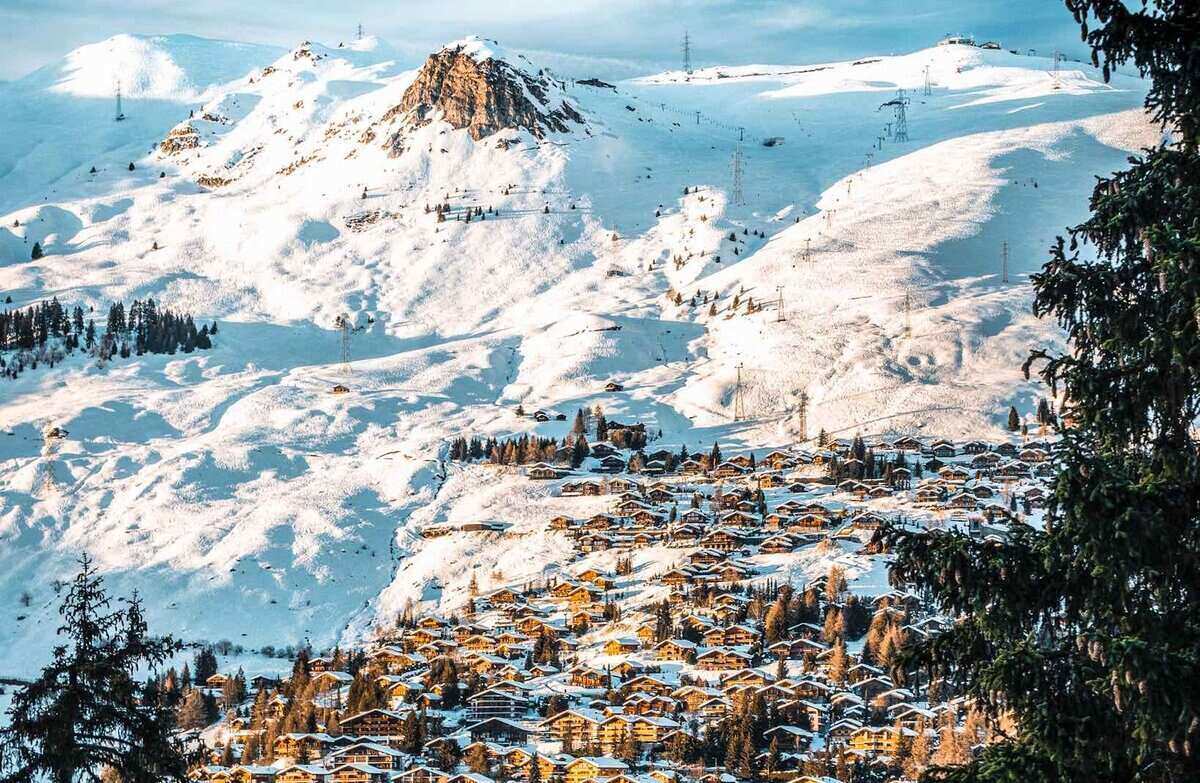
Verbier is a glamorous winter playground for the rich and famous which comes with a hefty price tag. It’s a luxury Swiss ski resort that’s bordered by France to the west and Italy to the south.
Verbier is easily accessible from Geneva airport by road or by train. It’s one of the best ski resorts in Europe due to its vast ski area, lively après and spectacular scenery.
About the town
Verbier is a charming town dotted with traditional wooden chalets and framed by panoramic mountain vistas.
I love that it’s a picture-perfect ski town with a traditional and authentic feel. Yet it also brings a vibrant buzz and laid-back atmosphere.
There is an impressive selection of gourmet restaurants, fantastic bars and designer shops. Verbier is a friendly town that offers exceptional hospitality to its well-heeled visitors.
Skiing in Verbier
The ski resort of Verbier is located in the centre of the 4 Valleys. It comprises a vast ski area of 410km, which has something for every ability.
There are plenty of wide and long cruising blues, which I know that beginners and intermediates will love honing their skills on.
I’d suggest that beginners head to the Savoleyres/La Tzoumaz area, where they will find sunny open pistes.
In fact, Verbier has plenty of sun-drenched slopes and brilliant weather record, making it the perfect place to get those dreamy bluebird days.
Although beginners and intermediates will be just fine, I think Verbier is best suited to advanced skiers.
The resort is famed for its easily accessible off-piste terrain, and is a popular destination with freestylers and freeriders.
In fact, the resort hosts the Verbier Xtreme freeride contest, which is the last stop in the Freeride World Tour.
Due to its high altitude areas and south western facing bowl, Verbier has snowsure conditions throughout the season.
Note that it can get busy on weekends and at peak school holiday times.
Après and nightlife
Verbier is known for its buzzy nightlife, providing what I think is the best après scene in Switzerland.
Bars and restaurants are extensive but they are not budget-friendly. It’s best to make the most of happy hours where possible, or you can quite easily burn through your money!
Start in the slope-side Chalet Carlsberg or Bar 1936, then head to Farinet, Pub Mont Fort or T-Bar in town.
For those who like to party into the early hours, I’d suggest dancing the night away in the famous Farm Club.
Where to stay
W Verbier is a luxurious hotel located next to the main lift, where traditional Swiss design meets contemporary furnishings and amenities.
Consider the cosy yet stylish Hotel Vanessa or the sumptuous Le Chalet d’Adrien. For an elegant boutique hotel and spa, I’d recommend booking into the Experimental Chalet.
11. Lech, Austria
Best for: Great snow & Austrian luxury
Nearest airport: Innsbruck, Zurich
Transfer time: 1 hour 30 mins, 2 hours
Resort height: 1,450m
Ski area altitude: 1,304-2,811m
Beginners: Good
Intermediates: Excellent
Advanced: Good
Freestyle: Excellent
Après: Good
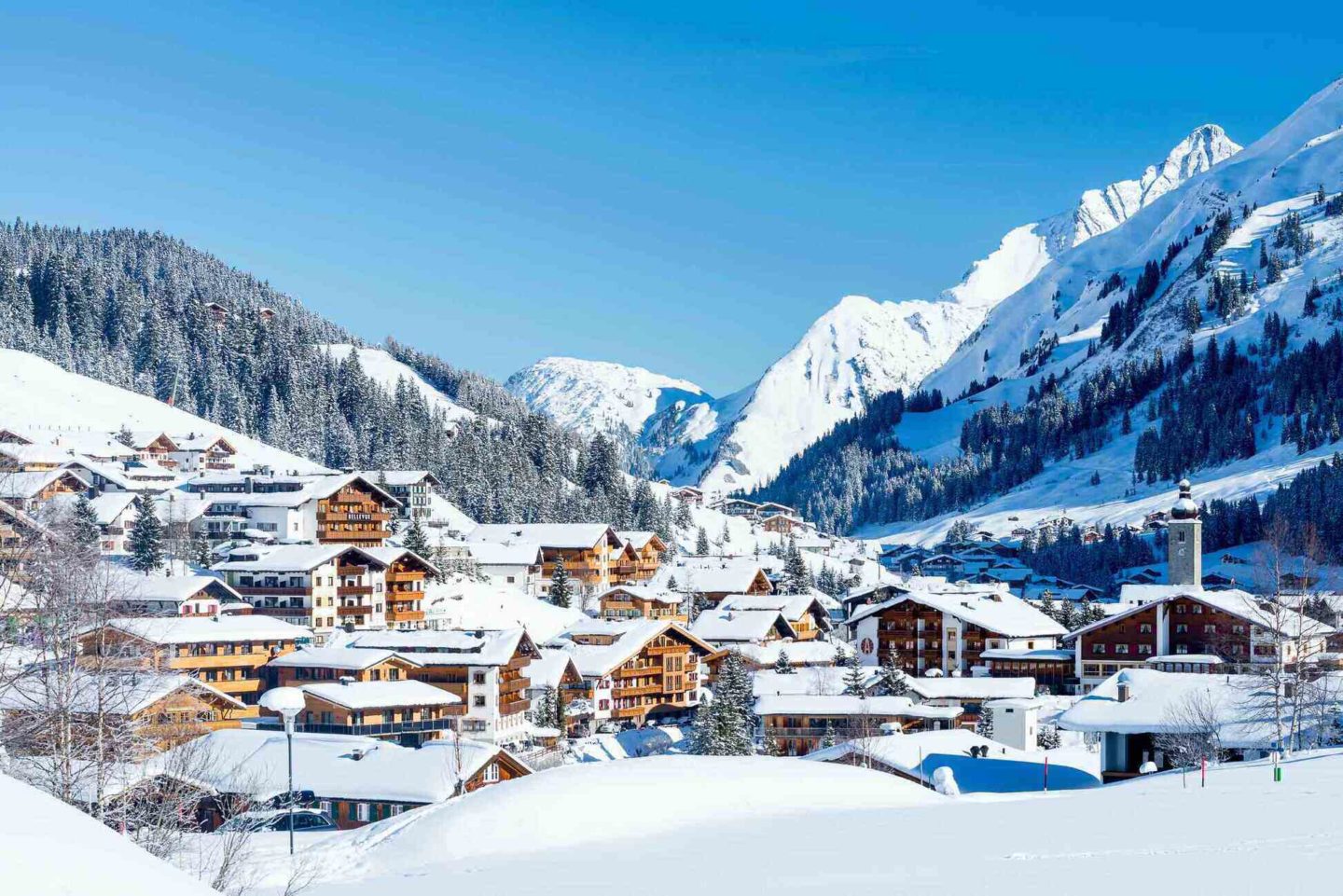
A chic ski resort, Lech is generally considered to be the most luxurious ski spot in Austria.
As one of the best ski resorts in Europe, it combines world-class skiing and an exceptional snow record with an abundance of activities and amenities off the slopes.
Lech is the perfect place for a spot of people-watching with its fashionable crowds.
About the town
Lech is home to an abundance of high end hotels, fine dining restaurants and elegant après spots. The main street is lined with designer shops which draw stylish shoppers and well-heeled shoppers.
Despite its fashionable vibe, I love that it still retains an authentic Austrian charm with its quaint wooden chalets and age-old church. Lech is a particular favourite with the Dutch royal family.
Skiing in Lech
Part of the expansive Ski Arlberg ski area, Lech is also linked to St Anton, Zürs, Warth and Schröckens via speedy gondolas.
Beginners can hone their skills on the nursery slopes located right by the town centre, then progress to the wide, sunny slopes higher up.
There is an abundance of terrain that’s perfectly suited to intermediate skiers, with a variety of blue and red runs, including some beautiful tree-lined blues.
For advanced skiers, there is only one black run, but I can assure you that Lech offers some fantastic off-piste terrain.
With an excellent snowfall record, it’s ideal for powder hounds. The longest powder snow route is the 5.5km Madloch descent.
Heli-skiing is also an option on the nearby Mehlsack and Schneetäli-Orgelscharte summits. Lech benefits from a state-of-the-art lift system with heated chairlifts and fast gondolas.
Après and nightlife
Après is a sophisticated affair in Lech. Think outdoor ice bars and champagne in abundance (sign me up!). As you’d expect, it comes with a hefty price tag.
Stop for a traditional Austrian gluhwein at the slopeside Eisbar, or head to Schneggarei for a lively après spot with house music and a younger crowd.
For a more refined experience, indulge at the champagne bar in the Strolz ski boutique. Those who prefer more of a party mentality, I suspect you’ll be better off heading to nearby St Anton.
Where to stay
Those with a preference for all things luxury will be spoilt for choice in Lech. Book into the exclusive Hotel Arlberg Lech or the super high end Hotel Aurelio Lech, complete with sumptuous spa.
Another luxury option is Severins Alpine Retreat, which combines the privacy of a luxury chalet with all the benefits of a hotel.
Post Lech Arlberg is a boutique five-star hotel that’s full of history, or book into the family-run Kristiania Lech.
12. Méribel, France
Best for: Families & mixed ability groups
Nearest airport: Chambéry, Geneva
Transfer time: 1 hour 30 mins, 2 hours 15 mins
Resort height: 1,450m
Ski area altitude: 1,300-3,230m
Beginners: Excellent
Intermediates: Excellent
Advanced: Good
Freestyle: Excellent
Après: Excellent
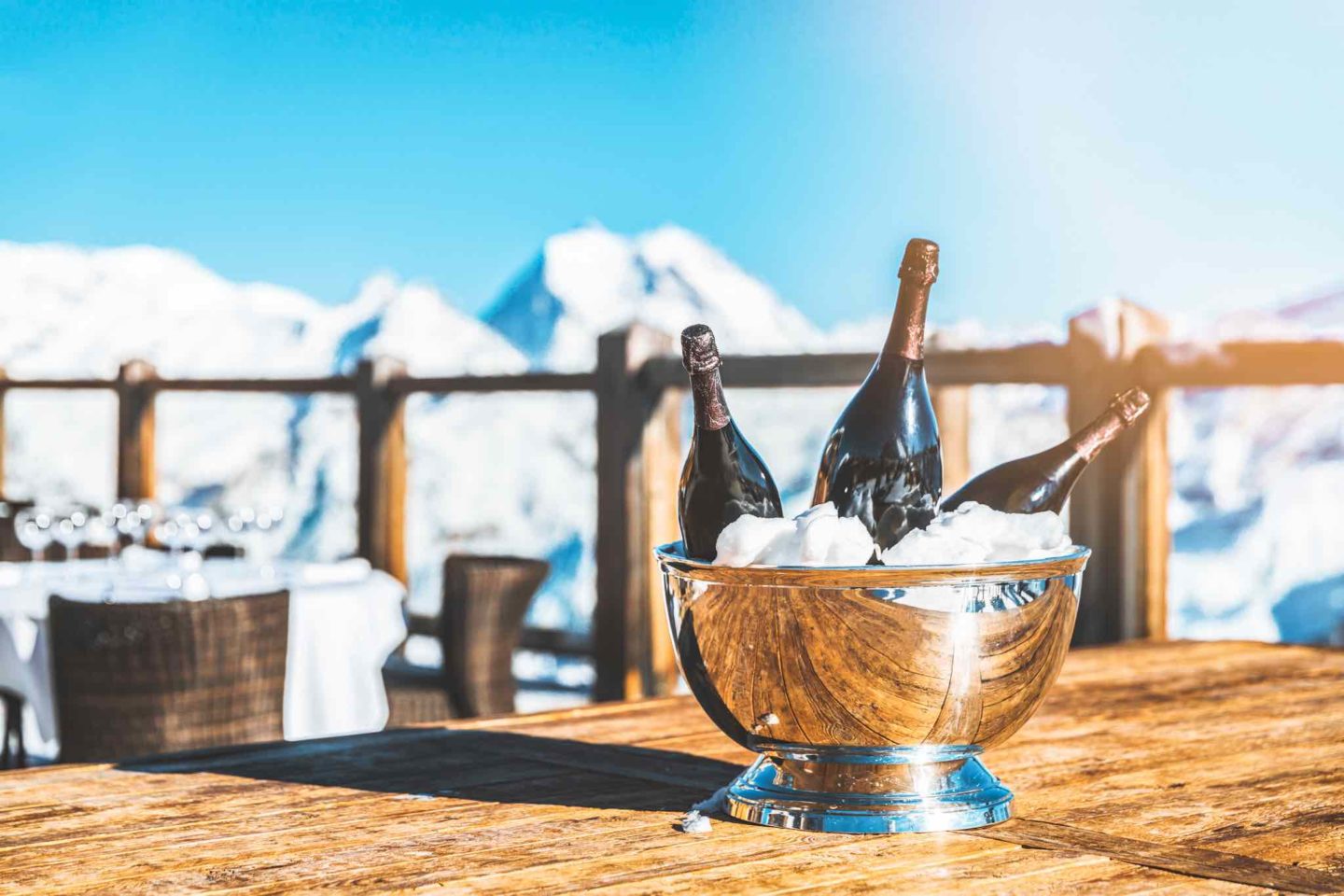
Méribel is another popular resort in the Three Valleys ski area and is a particular favourite with Brits (myself included!).
I spent last Christmas here with my family and it was simply magical. The town is set amidst an enchanting woodland setting with postcard-perfect scenery.
Méribel offers access to the largest ski area in Europe, lively après, and a wealth of wonderful restaurants and hotels. So I’m sure you can see why I’ve included it as one of the best ski resorts in Europe.
About the town
Méribel is a traditional alpine town dotted with wooden chalet-style buildings. It’s particularly popular with families, with excellent ski schools and a family-friendly atmosphere.
Off the slopes, kids will be kept entertained by the impressive Olympic centre complete with swimming pool, ice rink and spa.
In terms of dining, the restaurants on offer range from casual pub grub to traditional Savoyard cuisine.
Skiing in Méribel
Méribel is an excellent resort for all skiing and snowboarding abilities. It’s famed for its beautiful tree-lined runs near the town, which are ideal for beginners to practise on.
Intermediate skiers can explore the many blues and reds throughout the Three Valleys area.
While expert skiers can enjoy the off-piste terrain and steep black runs dotted throughout the resort. There’s also the Women’s Olympic Downhill run on La Face.
A modern lift system ensures speedy gondolas and chairlifts to the effect of minimal queues.
Being located right in the middle of the Three Valleys, I love that Méribel offers easy access to the neighbouring resorts of Val Thorens and Courchevel.
Après and nightlife
Méribel has a lively après scene with plenty of live music and a range of bars to try. The infamous La Folie Douce can be found in Méribel, complete with live music and dancing on tables in the sunshine.
For more live music, I’d recommend heading to Le Rond Point, a popular ski-in ski-out destination. Or for a cosier après experience, try Fifty50 Bar. Later on, O’Sullivans or Jack’s Bar offer late night partying.
Where to stay
Hôtel Le Coucou is a five-star chalet-style ski hotel located directly on the ski slopes. Foodies will love Le Kaïla with its spectacular Michelin-starred restaurant.
High-end mountain hotel Refuge de la Traye injects luxury into the traditional mountain hut.
If you’re after excellent wellness facilities, consider the four-star Hotel La Chaudanne. For five-star self catering, I’d suggest booking into the Résidence Pierre & Vacances Premium L’Hévana.
13. Kitzbühel, Austria
Best for: A world famous ski run
Nearest airports: Salzburg, Innsbruck
Transfer time: 1 hour 45 mins, 2 hours
Resort height: 760m
Ski area altitude: 760-2,000m
Beginners: Reasonable
Intermediates: Good
Advanced: Reasonable
Freestyle: Reasonable
Après: Good
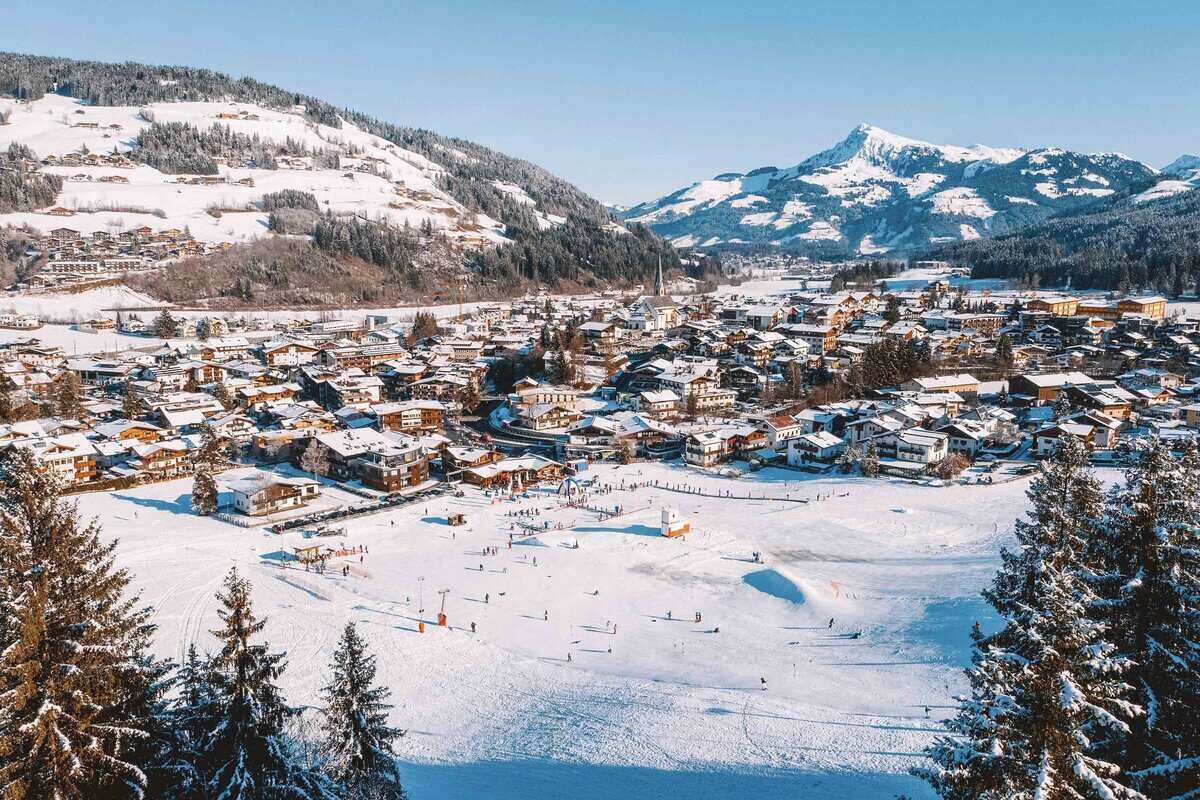
Kitzbühel is probably most famous for the iconic Hahnenkamm downhill race, which has been held annually in the resort since 1931.
With its designer shops and fine dining restaurants, Kitzbühel is one of the more upmarket ski towns in Austria.
About the town
Kitzbühel is a medieval town with cobbled streets and a pedestrianised centre. It’s full of character and is an undeniably pretty place to explore.
Home to luxury boutiques, chic cafés and stylish bars, it’s easy to see why it has earned its nickname, ‘Glitzy Kitz’.
I’m pleased to say that Kitzbühel is a great resort for foodies with lots of mountain huts and award-winning restaurants.
Skiing in Kitzbühel
Kitzbühel is best suited to intermediate skiers. There is a compelling mixture of wide-open pistes and tree-lined runs, although some slopes can get a little crowded.
The resort is more limited for beginners, although first time skiers and snowboarders can make use of the free beginner lifts and the nursery slopes at the bottom of the Hahnenkamm gondola.
Experienced skiers will not be able to resist flying down the Hahnenkamm Streif run, which plays host to arguably the most famous ski race in the world.
Pros should also head to the Ehrenbachhöhe for challenging moguls and thrilling off-piste, when the conditions allow.
Although it’s not a high resort, snow conditions are still good throughout the season which runs from December to April. This is partly due to the recent investment in state-of-the-art snowmaking systems.
Après and nightlife
In my opinion, Kitzbühel offers a great party vibe. Never more so than on the penultimate weekend of January when the World Cup comes to Kitzbühel.
On the mountain enjoy stunning views with your drink at the umbrella bar on the Panorama Alm.
For traditional Tyrolean après and a lot of fun, head to The Streifalm on the lower slopes of the Hahnenkamm. For table dancing and a party atmosphere, try British pub The Londoner.
Where to stay
For a luxury five-star resort, book into the Grand Tirolia Kitzbühel. There is also the five-star Tennerhof Gourmet & Spa de Charme Hotel, which offers panoramic views and an enticing spa.
Tennerhof also provides a number of luxury chalets nearby. For an unforgettable rooftop pool and an adults-only hotel, I’d recommend booking a stay at Hotel Schwarzer Adler.
14. Les Arcs, France
Best for: Varied skiing area
Nearest airport: Chambéry, Geneva
Transfer time: 1 hour 45 mins, 2 hours 40 mins
Resort height: 1,600-2,000m
Ski area altitude: 1,250-3,250m
Beginners: Good
Intermediates: Excellent
Advanced: Good
Freestyle: Good
Après: Reasonable
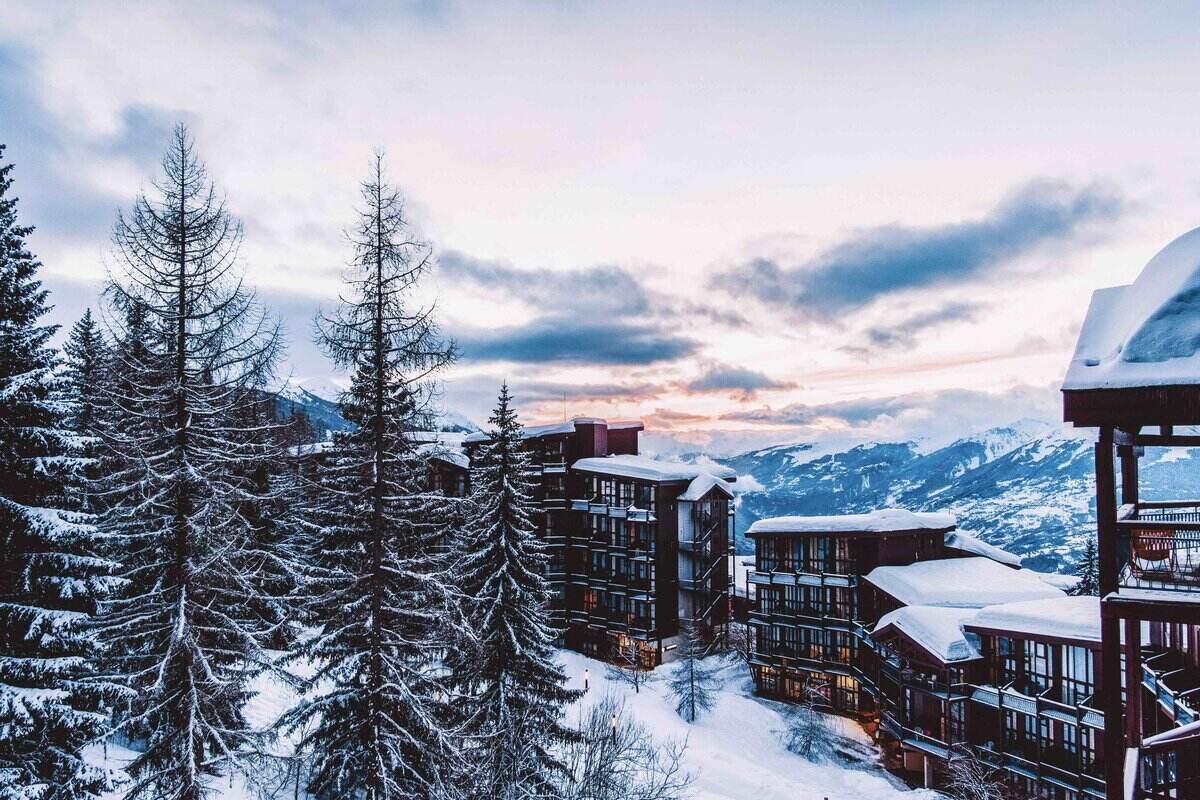
Les Arcs was the first ever purpose-built ski resort in France. Despite its purpose-built origins, Les Arcs comprises pretty car-free villages and beautiful views of Mont Blanc.
It provides visitors with access to a huge and varied ski area that’s suitable for all abilities, and a strong snow record.
For those travelling from the UK, Les Arcs can actually be reached quite easily by train, as it’s located close to Bourg-St-Maurice, a direct stop on the Eurostar.
About the town
Les Arcs is split into four villages. Arc 1600 is the most relaxed village and is popular with families.
The best bars are situated in Arc 1800, which is by far the liveliest of the villages. Arc 1950 is a more traditional alpine village, and Arc 2000 offers quick access to the glacier.
Most accommodation throughout Les Arcs offers easy ski-in ski-out facilities for the ultimate convenience.
Skiing in Les Arcs
Les Arcs is part of the large Paradiski area, which offers terrain for every ability across 425km of pistes. It’s linked by cable car to La Plagne – another French resort that’s particularly popular with families.
Explore an impressive variety of ski terrain, from open pistes to tree-lined trails. There is a beginner zone in every village and gentle blues for learners to progress too.
Meanwhile intermediates are spoilt for choice with a number of cruising blues and reds. Experts can occupy themselves with challenging blacks and mogul-covered runs on Glacier du Varet.
More experienced skiers can also try the thrilling 7km black Aiguille Route, with Europe’s biggest vertical drop of 2,000m.
In terms of off-piste skiing, Grand Col is a popular powder playground, or there are plenty of off-piste forest runs near the Derby lift.
Après and nightlife
I’ve found that getting the full après experience in Les Arcs can be tricky due to the separation of the villages.
For those who like a vibrant après scene, I’d recommend staying in Arc 1800, as this is where most of the bars are.
Previously there was only one après ski bar on the mountain, called Arpette, where there is a live DJ between 3-5pm.
This has now changed with the arrival of La Folie Douce, which has certainly improved the après scene in Les Arcs.
For a happy hour that’s close to the lifts, head to the Red Hot Saloon Bar in Arc 1800, which stays open late into the night.
Where to stay
For a luxurious five-star hotel, book a stay at the gorgeous Taj-I Mah Hotel in Arc 2000. Or the four-star Aiguille Grive Chalets & Hotel in Arc 1800 is a chic hotel located right on the slopes.
If you prefer self-catering apartments, consider Résidence Pierre & Vacances Premium and 153 Source de Marie in Arc 1950, or Chalet des Neiges in Arc 2000.
15. Sölden, Austria
Best for: Channelling your inner 007
Nearest airport: Innsbruck
Transfer time: 1 hour
Resort height: 1,350m
Ski area altitude: 1,350-3,340m
Beginners: Good
Intermediates: Excellent
Advanced: Good
Freestyle: Good
Après: Excellent
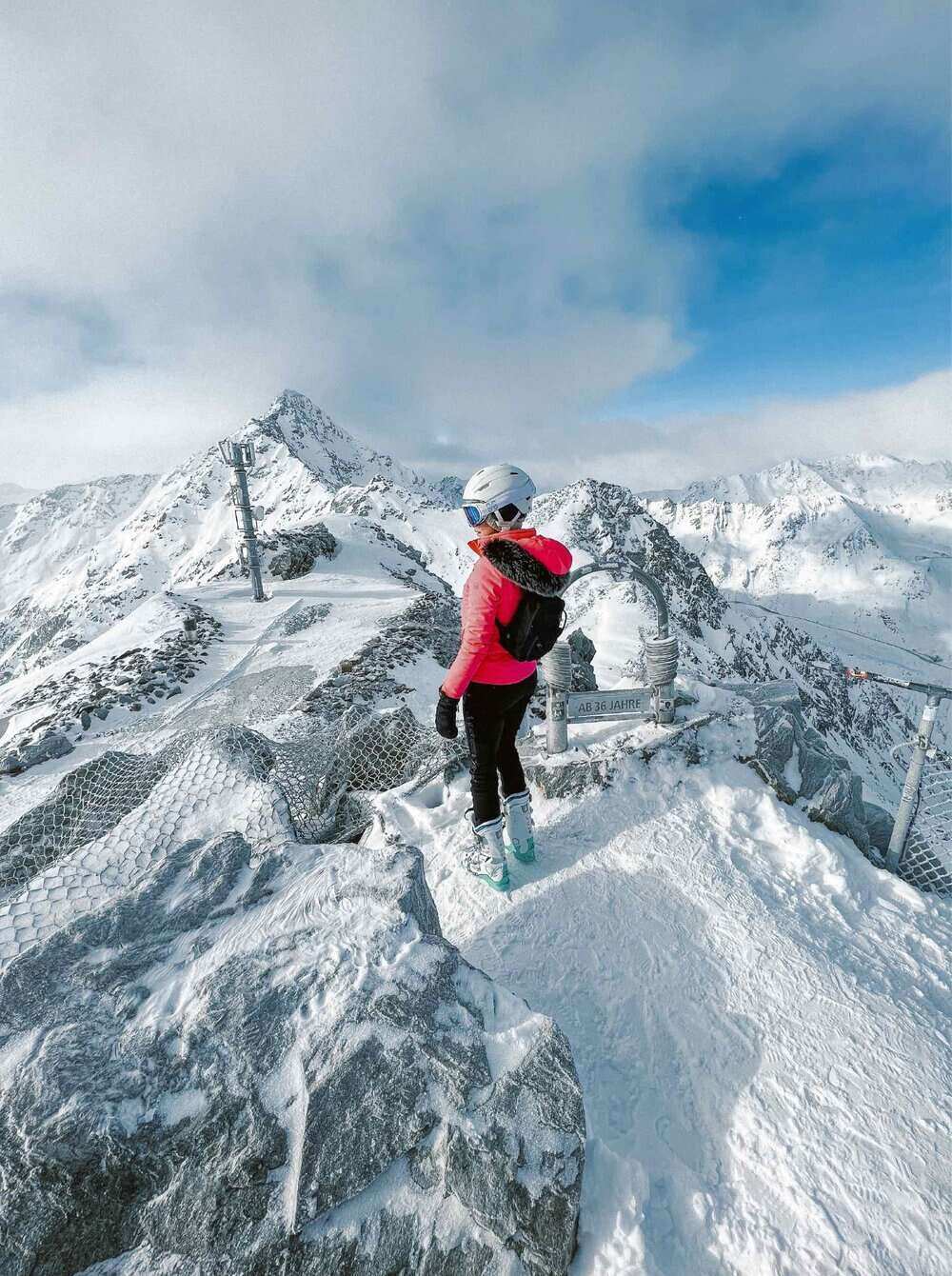
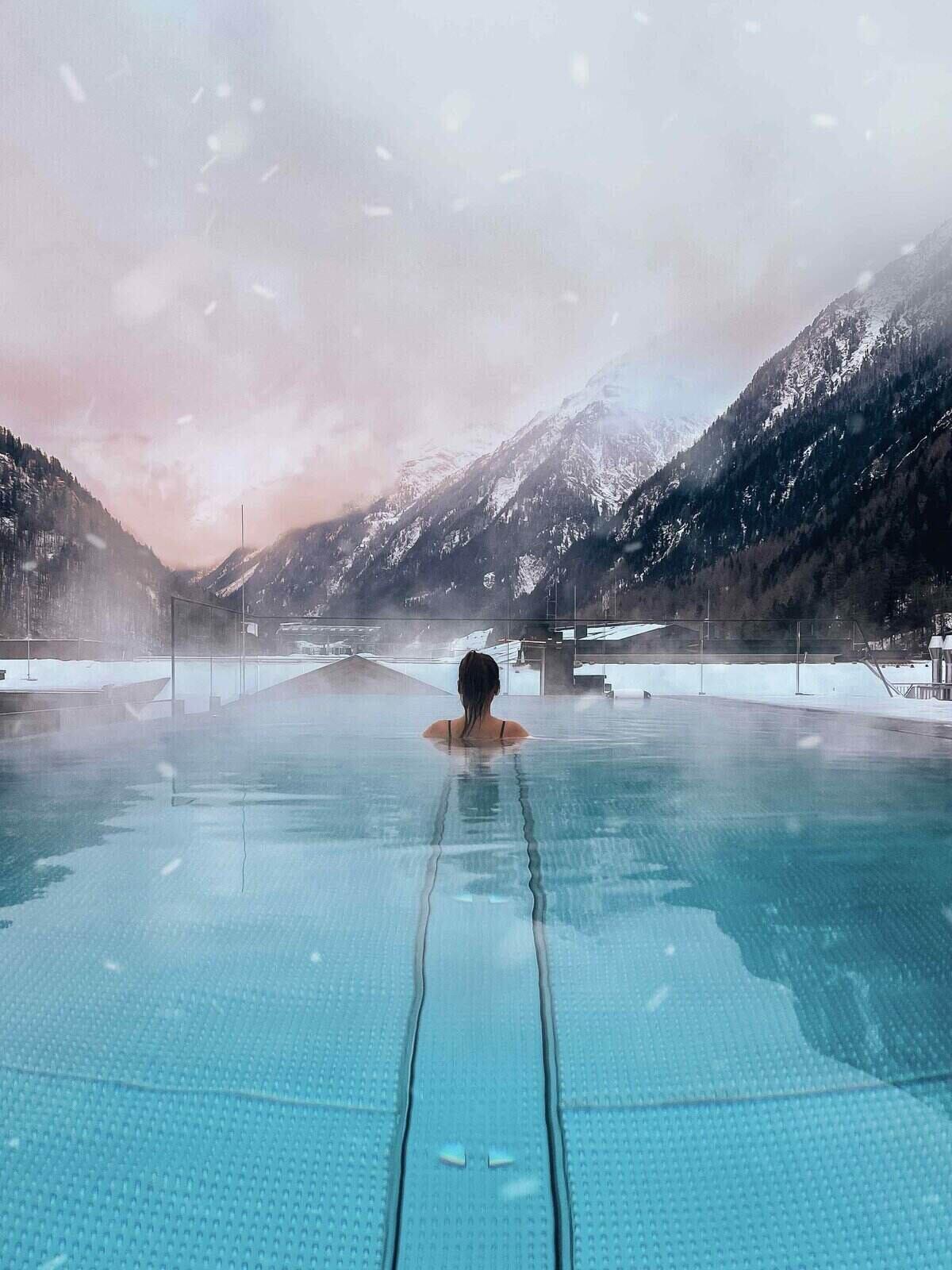
For a European ski resort that offers a bit of everything, I’d recommend booking a trip to Sölden in Austria.
Located in the Ötztal Valley of Tyrol, Sölden (or Soelden) brings snow-sure skiing, lively après and a James Bond heritage.
Being just an hour away from Innsbruck airport, much of its appeal is in the wonderfully short transfer times and accessibility.
As someone who gets car sick on ski transfers due to the winding mountain roads, I’m a big fan of a short transfer!
Skiing in Sölden
The ski area comprises two large glaciers and high altitudes, meaning excellent snow conditions. In fact, the resort is so snow-sure that keen skiers can hit the slopes as early as September in Sölden.
The large ski area brings a compelling mixture of runs, from wide open blues to steep and challenging blacks.
Although beginners will be just fine in Sölden, there are other ski resorts which are better suited to first time skiers and snowboarders.
Sölden also shares a ski area with the neighbouring resorts of Hochgurgl and Obergurgl (another two of my personal favourite resorts), which are just a 20-30 minutes bus journey away.
Sölden has a good reputation within the ski world, playing host to the FIS Alpine World Cup Opening.
The other big draw to visitors from all over the world is its 007 connection. The resort was used as a key filming location in the James Bond Spectre film.
There is a stunning cinematic installation called 007 Elements, perched on the side of the mountain at 3,050m. Here you can also dine in the fine dining restaurant Ice Q, another location used in the film.
About the town
The town itself offers traditional Tyrolean charm but with the convenience of modern amenities.
There are a multitude of restaurants to choose from, as well as a number of bars and clubs for continuing the après party.
Locals and staff alike are all incredibly friendly, making it a very welcoming place to visit. Sölden has a lively après scene, both on the mountain and in the town.
Where to stay
The stunning Hotel Bergland is a boutique five-star establishment with a sumptuous spa. It even has the James Bond seal of approval, coming recommended by Daniel Craig himself!
Another luxury option and my personal favourite is the Das Central Hotel, where discerning guests can enjoy award-winning cuisine and a three-storey, 1,500-square-metre spa.
For a more budget-friendly option, I’d recommend the modern Die Berge Lifestyle Hotel or the stylish Hotel Alpina.
Learn more in my Sölden ski resort guide or read my review of staying at Das Central Hotel.
Other amazing ski resorts in Europe to consider
Narrowing down the best ski resorts in Europe felt like an impossible task! There are some amazing ski resorts which didn’t quite make it onto my list, but are still very much worth considering.
Here are some of my favourites:
Megève, France: A chic village with access to 325km of pistes, known for its many beautiful tree-lined runs with views of Mont Blanc.
Morzine, France: Just down from Avoriaz is the traditional town of Morzine. It’s a big but picturesque town that’s full of character and buzz, with access to one of the largest ski areas in the world.
Alpe D’Huez, France: One of the oldest resorts in France, Alpe D’Huez is famed for its good weather and excellent snow conditions. It has a lively après scene and is great for beginners.
Les Deux Alpes, France: A good value French ski resort that offers high altitude skiing, reliable snow conditions, and excellent off-piste opportunities.
Tignes, France: A world-class ski resort situated right next to Val D’Isère. Tignes offers a huge ski area, lively après, and snowsure slopes.
Courmayeur, Italy: A traditional Italian village with car-free cobbled streets, boutique shops, and excellent bistros. Enjoy snowsure conditions due to great snow making systems.
Cervinia, Italy: With views of the Matterhorn and a close proximity to Zermatt, Cervinia is a popular Italian ski resort. A great resort for beginners with its long and gentle slopes. Discover the best hotels in Cervinia.
Val Gardena, Italy: Spectacular scenery and a vast ski area awaits you at Val Gardena. It’s a truly charming town with a friendly and welcoming atmosphere.
Obergurgl, Austria: A quiet and charming resort with a good selection of luxury hotels and sumptuous spas. Expect snowsure conditions from the high altitude slopes and unmissable après at the Nederhütte.
Gstaad, Switzerland: A glamorous ski town dotted with wooden chalets, designer shops and award-winning restaurants. It’s an exclusive resort with access to 200km of ski terrain.
If you have any personal favourite ski resorts in Europe, do let me know in the comments!
Looking for more ski content? You may also like:
- The Ski Edit: guide to booking a ski holiday
- 20 top ski resorts for beginners
- 12 best luxury ski resorts in Europe
- 20 lively ski resorts for après and nightlife
- 10 amazing ski resorts in Switzerland
